






www.poultrytimes.com Your poultry industry news source since 1954 May 20, 2024 LAYER & EGG / FOOD SAFETY

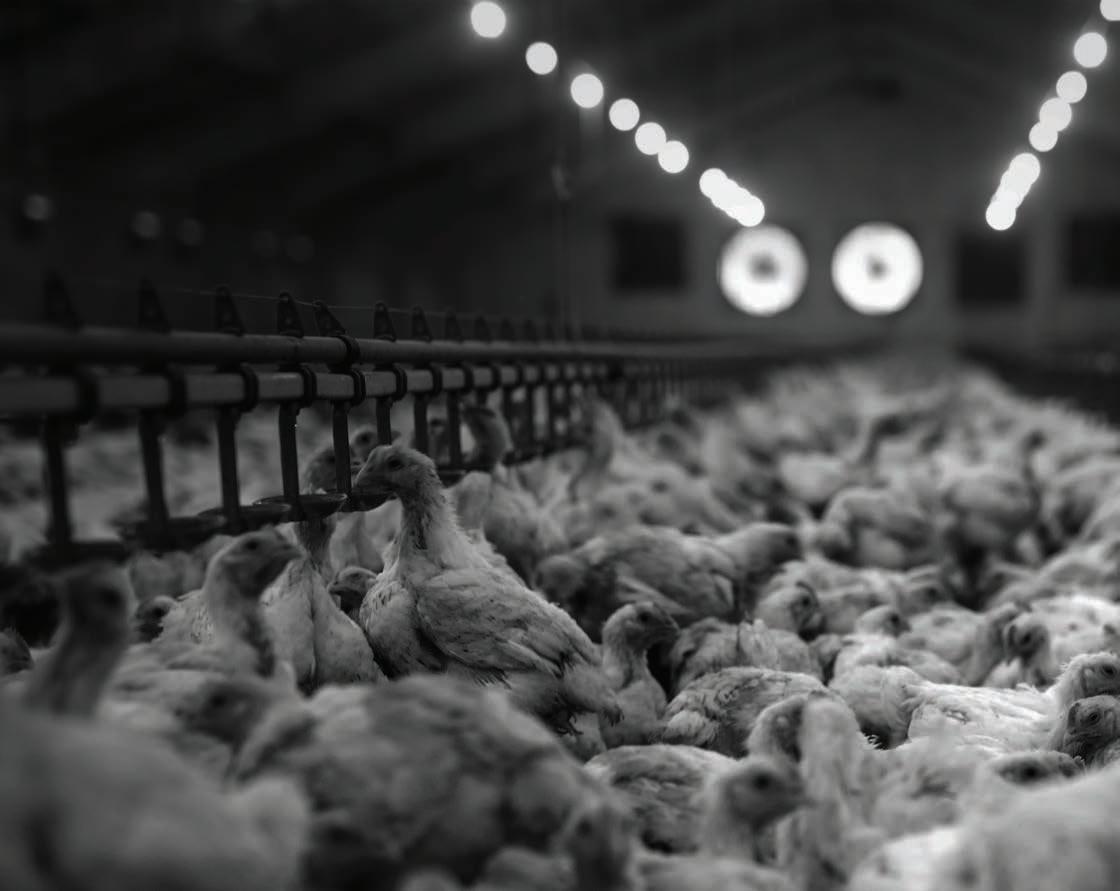

References: 1-3. Data on file at Boehringer Ingelheim. Vaxxilive™ is a trademark of Boehringer Ingelheim Vetmedica GmbH, used under license. ©️2022 Boehringer Ingelheim Animal Health USA Inc., Duluth, GA. All Rights Reserved. US-POU-0074-2022A
protection,
protection
GIVE YOUR FLOCK A HEAD START. Learn more at poultryhealthusa.com
In the race against time, get a lead on protecting your flock from coccidiosis. The proven formula of VAXXILIVE™ COCCI 3 has strains that provide optimal
result in less oocyst production, and lead to earlier immunity.1-3 Experience reliable
and unmatched support when you choose Boehringer Ingelheim.


CORPORATE HEADQUARTERS
POULTRY TIMES PO Box 1338 Gainesville, GA 30503
PH | 770-718-3443 FAX | 770-532-4894
POULTRY TIMES STAFF
CINDY WELLBORN
General Manager, Poultry Times/PoultryTimes.com 770-718-3443 cwellborn@poultrytimes.com
DAVID B. STRICKLAND
Editor, Poultry Times 770-718-3442 dstrickland@poultrytimes.com
ELIZABETH BOBENHAUSEN
Content Writer, Poultry Times 770-209-3335 ebobenhausen@poultrytimes.com
RACHEL DANFORD
Digital Manager, PoultryTimes.com 770-831-8631 rdanford@poultrytimes.com
STACY LOUIS
Sales Manager, Poultry Times/PoultryTimes.com 770-718-3445 slouis@poultrytimes.com
JANICE SISK
Sales & Administrative Assistant, Poultry Times/PoultryTimes.com 770-718-3439 jsisk@poultrytimes.com
KIM EWING
Circulation 770-718-3420 kimewing@poultrytimes.com
Index of Advertisers
Be sure to pay a visit to these esteemed sponsors of the Poultry Times, recognizing them as vital contributors to the industry who greatly appreciate your support.
Ag Lighting | 21 615-378-0108; www.poultrylights.com
BDH Belts | 23 717-871-0994; www.bdhbelts.com
Big Dutchman | 22 616-582-4000; www.bigdutchmanusa.com
Boehringer Ingelheim | 2 www.boehringer-ingelheim.com
Douglas Machine | 16 800-331-6870; www.dougmac.com
Eagan Mfg. | 20 870-878-6805; www.eaganmfg.com
FPM | 13 402-729-2264; www.fpmne.com
Gas-Fired Products | 14 800-849-7311; www.spaceray.com
Kelley Mfg. | 25 800-444-5449; www.kelleymfg.com
Kunafin (The Insectary) | 29 800-832-1113; www.kunafin.com
L.B. White | 15 608-783-5691; www.lbwhite.com
Mar-Jac Poultry | 28 770-531-5000; www.marjacpoultry.com
Overdrive Lighting | 19 800-657-0509; www.aglights.com
Precision Lighting | 2,17,24,32 800-737-1837; www.poultrylighting.com
Rocktown Transport | 26 540-908-1098; https://www.rocktown-transportllc.com
The Egg Carton Store | 29 866-333-1132; www.eggcartonstore.com
United Country Real Estate | 18 800-999-1020; www.farms.united.country.com
Walinga USA | 31 800-466-1197; www.walinga.com
Weigh Tech | 25,27 800-457-3720; www.weightechinc.com
Wholesome Company | 28 www.wholesomecompanies.net
Publication Disclaimer
Poultry Times (USPS 217480) ISSN 0885-3371 is published biweekly, 345 Green Street, N.W., Gainesville, GA 30501. Telephone 770-536-2476; Fax 770532-4894. Postage paid at Gainesville, Georgia 30501. Poultry Times assumes responsibility for error in first run of an in-house designed ad only. Advertisers have ten (10) days from publication date to dispute such an advertisement. After ten (10) days, ad will be deemed correct and advertiser will be
charged accordingly. Proofs approved by advertiser will always be regarded as correct. Subscriptions: Surface mail in U.S., $25.00 for one year, $45 for two years and $65 for three years. Business or occupation information must accompany each subscription order.
Change of Address: Postmaster, report change of address to Poultry Times, P.O. Box 1338, Gainesville, GA 30503.
Companion Poultry Publications: A Guide to Poultry As-
sociations; Poultry Resource Guide.
The opinions expressed in this publication by authors other than Poultry Times staff are those of the respective author and do not necessarily reflect the opinions of Poultry Times. Advertisement content is the sole responsibility of the advertiser. Poultry Times assumes no liability for any statements, claims or assertions appearing in any advertisement.
POULTRY TIMES POULTRYTIMES.COM 4
© 2024 Metro Market Media Gainesville, Georgia 30503
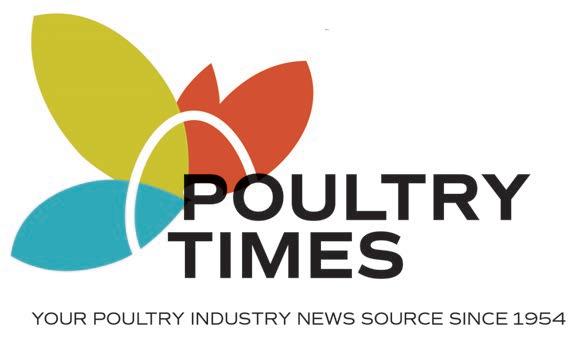

News
6 | Industry responds to chicken litter accusations
Business Features
12 | Neogen Corp. celebrating 40 years of Petrifilm
Calendar
MAY
19 | FDA says milk supply safe after some AI positive test samples

MAY 21 — TPA GOLF SCRAMBLE, Hermitage Golf Course, Old Hickory, Tenn.
Contact: Tennessee Poultry Association, 1404 N. Main St., Shelbyville, Tenn.; Ph: 931225-1123; info@tnpoultry.org; www.tnpoultry.org.
MAY 22 — TPA SPORTING CLAYS, Cross Creek Clays, Palmyra, Tenn. Contact: Tennessee Poultry Association,
On the cover
LAYER&EGG/ FOOD SAFETY
20 | New USDA requirements for livestock movement
26 | UF: Report recounts Fla. dolphin found with HPAI in ’22
1404 N. Main St., Shelbyville, Tenn.; Ph: 931-225-1123; info@tnpoultry.org; www. tnpoultry.org.
JUNE
JUN 4 — AFIA/KSU-500, Fundamentals of Feed Manufacturing. Online course runs through July 9, 2024. Contact: American Feed Industry Association, 2101 Wilson Blvd., Suite 810, Arlington, Va. 22201. Ph: 703-524-0810; www.afia.org.
Viewpoints





“In recent years and presently, the disease has been detected in domestic commercial layer and broiler breeder chickens resulting in significant economic losses.”
— Dr. Denise Heard | 10
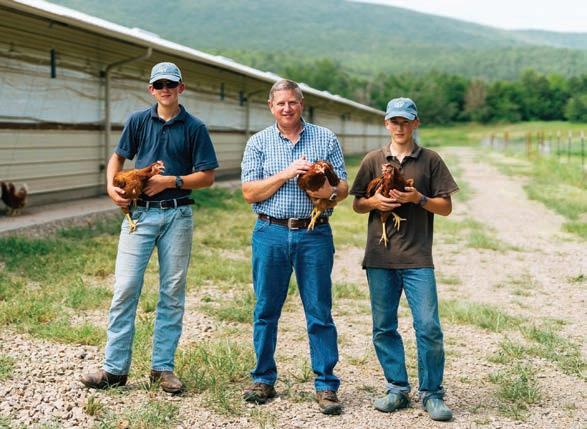
9 | Happy Egg Co. seeks additional farmers in America’s ‘heartland’


Connect with us Visit us at: POULTRYTIMES.COM 24/7 on the World Wide Web or scan the code to the right /poultrytimes


POULTRY TIMES POULTRYTIMES.COM 5 VOL. 71 | NO. 11 | MAY 20, 2024
7
www.poultrytimes.com Your poultry industry news source since 1954 May 20, 2024 LAYER & EGG / FOOD SAFETY IN THIS ISSUE
@PoultryTimes /poultrytimesga
DAVID B. STRICKLAND Poultry Times Editor dstrickland@ poultrytimes.com
WASHINGTON — Since the rise in occurrence and discussion of highly pathogenic avian influenza making the species jump into dairy cattle in several western states, there has also been a rise in media reports and speculation as to the cause of the virus’s spread.
There have been recent media reports mentioning as a supposed culprit the use of dried poultry litter in dairy cattle diets. Animal feed industry associations have taken the forefront in challenging this claim.
“We are concerned with recent sensational headlines and articles falsely accusing feed practices of spreading the HPAI virus on dairy farms without fully disclosing the facts,” Constance Cullman, American Feed Industry Association president and CEO, said. “As an association representing the total feed industry, we would like to set the record straight.”
USDA’s Animal and Plant Health Inspection Service notes that based on current information and research that wild migrating birds are the most likely source of spreading the virus onto dairy cattle farms.
Not only is poultry litter not being considered a likely source, but the movement of such materials from an infected poultry farm is prohibited.
“We are not allowed to move litter off a farm that has a positive flock — period,” Ashley Peterson, the National Chicken Council’s vice president of scientific and regulatory affairs, said. “Litter is composted and must be free of the virus which is confirmed by USDA testing. It is not until the house, the litter, and anything else on an infected farm tests negative and goes through a fallow period before movement of anything off a farm can occur.”
“The Food and Drug Administration has also gone on record stating that it is ‘not aware of any data showing that the use of poultry litter in cattle feed is posing human or animal health risks that warrant restrictions on its use,’” Cullman added.
“The animal food industry is committed to supporting the nation’s poultry and dairy farmers
Industry responds to chicken litter accusations
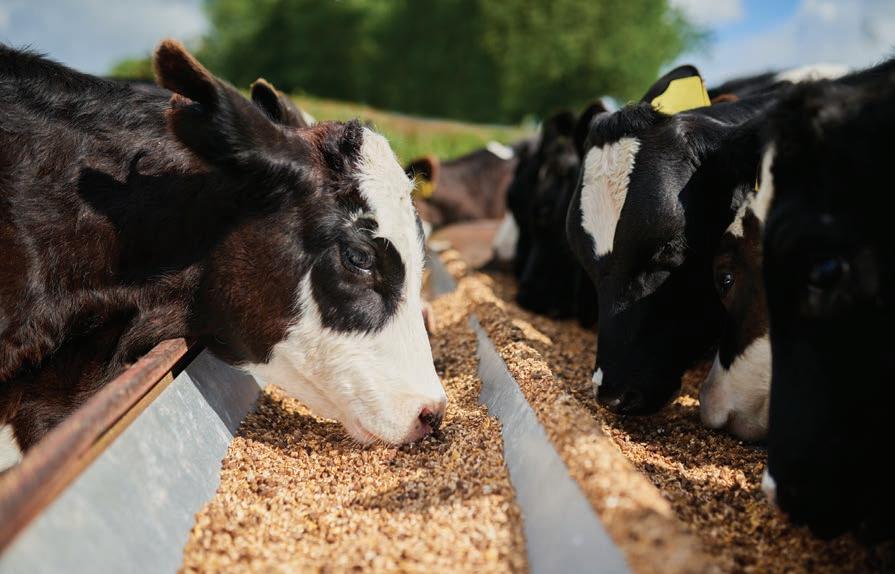
tant to share some insight into the important food safety protocols that are in place to make this accusation highly unlikely.”
COVER STORY
throughout this animal health crisis and is enhancing feed mill biosecurity programs to help curb the HPAI virus’s spread,” Cullman said. “Let’s not vilify the hardworking farmers with false allegations while they are dealing with the emotional toll of caring for sick animals and working their hardest to ensure a safe food supply for Americans.”
Austin Therrell, executive director of the Association of American Feed Control Officials (AAFCO), noted that, “there are several news articles insinuating that poultry litter may be the culprit behind the spread of HPAI in U.S. dairy cattle. While it is theoretically possible, it is very unlikely the illness was spread through animal feed. It is impor-
There are thorough review processes and preventive safety measures that are required by animal feeds through the Food Safety Modernization Act, AAFCO added.
Therrell also noted that, “the AAFCO Ingredient Definition Request Process is extremely rigorous and transparent. It includes a scientific review by the (FDA’s) Center for Veterinary Medicine, as well as approval from a majority of state regulators. This regulatory pathway takes into account many potential food safety hazards to ensure that ingredients that gain approval can be safely and effectively marketed for use in animal food in the U.S.”
“AAFCO and its members are committed to working with the animal food industry, as well as producers across the U.S., to ensure that we continue to have the safest food supply in the world,” Therrell said. “Our vision is to be the trusted leader that safeguards animal and human health, and we will continue to do our part
to make sure that hardworking American farmers do not have to worry about the safety of the products they are feeding their animals.”
APHIS has addressed how the cases have shown the virus’s spread among dairy cattle.
“Wild migratory birds are believed to be the original source of the virus,” APHIS notes. “However, the investigation to date also includes some cases where the virus spread was associated with cattle movements between herds. Additionally, we have similar evidence that the virus also spread from dairy cattle premises back into nearby poultry premises through an unknown route.”
Regarding human transmission, the agency adds that, “as a reminder, analysis sequences of viruses found in cattle thus far have not found changes to the virus that would make it more transmissible to humans and between people. While cases among humans in direct contact with infected animals are possible, (the Centers for Disease Control and Prevention) believes that the current risk to the public remains low.”
POULTRY TIMES POULTRYTIMES.COM 6
PT
USDA concludes on its policymaking salmonella adulterant in breaded chicken
BY ELIZABETH BOBENHAUSEN Poultry Times staff ebobenhausen@ poultrytimes.com
WASHINGTON — The USDA’s Food Safety and Inspection Service has reached a conclusion to declare salmonella an adulterant in raw breaded stuffed chicken products such as Chicken Cordon Bleu and Chicken Kiev.
In a statement released by USDA, they explained that stuffed chicken products must surpass one colony forming unit per gram or higher for a salmonella infection. This initiative is part of a much bigger plan to decrease salmonella infections across the United States. FSIS will announce measures for other poultry products later this year.
“Under President Biden’s leadership, USDA is taking significant steps toward keeping American consumers safe from foodborne illness,” U.S. Agriculture Secretary Tom Vilsack said. “This final determination marks the first time that salmonella is being declared an adulterant in a class of raw poultry products. This policy change is important because it will allow us to stop the sale of these products when we find levels of Salmonella contamination that could make people sick.”
Since 1998, the FSIS has probed 14 salmonella epidemics and an estimated 200 sicknesses which can be contributed to consuming raw stuffed poultry items. The latest epidemic was in 2021 and it affected nearly 11 states. While raw stuffed poultry items only attribute to less than 0.15 percent of the domestic chicken supply, at least five percent of illness were caused by these products. The Centers of Disease Control and Prevention stated that salmonella sicknesses affect more than 1 million people each year.
The FSIS will have regulations put into place that include sampling and testing of the raw chicken before it is put into the chicken. If the raw chicken does

“There is no silver bullet or one-size-fits-all approach to food safety, which is why we employ a multi-hurdle strategy.”
not meet the requirements to be put into circulation, it will not be entered in the food supply. The new regulations will be applicable 12 months after publication in the Federal Register.
National Chicken Council President Mike Brown, in a statement said, “NCC is gravely concerned that the precedent set by this abrupt shift in longstanding policy has the potential to shutter processing plants, cost jobs, and take safe food and convenient products off shelves. We’re also surprised by FSIS’s victory lap here when the agency has no idea if this will move the needle on public health. The NCC fears that over 200 million servings of the items will be wasted, 500 to
1,000 people will lose employment and the poultry industry’s costs will increase.”
“NCC strongly supports effective public health measures and science-driven policy,” Brown added. “USDA’s determination is neither. What has been shown to be effective is clear and effective labeling, robust process controls and attention to raw material sourcing. NCC members have implemented these and other best practices, and NCC has repeatedly asked USDA to make many of these best practices mandatory, with no response.”
“There is no silver bullet or one-size-fits-all approach to food safety, which is why we employ a multi-hurdle strategy,”
Brown noted. “The only way to ensure our food is safe 100 percent of the time is by following science-based procedures when raising and processing chicken, and by handling and cooking it properly at home. NCC remains confident these products can be prepared and consumed safely, and NCC member companies will continue to workday in and day out to implement sound, science-based food safety programs that will continue to make America’s most popular protein even safer.”
Unlike the NCC, Consumer Reports was thrilled to hear the conformation of the new rule.
Brian Ronholm, director of food policy for Consumer Reports said, “salmonella contamination in poultry sickens hundreds of thousands of Americans every year. The USDA’s new rule on salmonella in breaded and raw chicken products is a historic development in the effort to reduce Salmonella illness rates. This rule should represent just the beginning and will hopefully lead to additional efforts to address Salmonella contamination in other poultry products.”
POULTRY TIMES POULTRYTIMES.COM 7
----
PT
USDA forecasts predict lowered table egg production for 2024
DAVID B. STRICKLAND Poultry Times Editor dstrickland@poultrytimes.com
WASHINGTON — Egg production for March reached 9.29 billion, which is 1 percent more than for the same time last year. Of this production, table eggs totaled 7.99 billion and 1.30 billion were hatching eggs, and of this hatching egg total, 1.20 billion were broiler-type and 101 million were egg-type, the USDA National Agricultural Statistics Service notes in its most recent “Chickens and Eggs” report.
“The average number of layers during March 2024 totaled 379 million, down 1 percent from last year,” the report added. “March egg production per 100 layers was 2,455 eggs, up 2 percent from March 2023.”
The total number of layers for the U.S., on April 1, was at 379 million, a decrease of 1 percent, NASS said. The 379 million is made up of 313 million layers for the table egg market, 61.9 million for broiler-type hatching eggs and 3.90 million for egg-type hatching eggs.
“Rate of lay per day on April 1, 2024, averaged 79.5 eggs per 100 layers, up 2 percent from April 1, 2023,” the report noted.
Also, in its recent “Egg Products” report, NASS adds that, “Shell eggs broken totaled 192 million dozen during March 2024, up 1 percent from March a year ago, and 4 percent above the 184 million dozen broken during the previous month.”
“During calendar year 2024 through March, shell eggs broken totaled 567 million dozen, up 3 percent from the comparable period in 2023,” the report continued. “To date, cumulative total edible product from eggs broken in 2024 was 726 million pounds, up 2 percent from 2023.”
2024
For the current year, table egg production is being forecasted lower, stemming from losses attributed to highly pathogenic avian influenza, according to the USDA’s Economic Research Service in its most recent “Livestock, Dairy and Poultry Outlook.”
“Table egg production totaled 616.2 million dozen in February, up 5 percent from February 2023,” the report notes. “The February flock averaged 310.4 million birds, nearly flat month-over-month and down 0.6 percent from a year earlier. The year-overyear increase in egg production is mainly attributed to an average daily lay rate of 82.2 eggs per 100 layers, an increase of 2 percent

from last February.”
In early March, the table egg layer inventory was reported at 311.2 million birds, NASS said, adding that this is a slight increase but 18.1 million less than the five-year average for the month. The agency also reports that given current lay rates the forecast table egg production for the first quarter of this year is 1.94 billion dozen.
“In light of recent outbreaks of highly pathogenic avian influenza in Texas and Michigan, table egg facilities with losses totaling 5.97 million birds, as well as slow flock recovery moving forward, projected table egg production is adjusted down to (1.935 billion) dozen the second quarter, (1.990 billion) dozen in the third quarter, and (2.055 billion) dozen in the fourth quarter,” NASS said. “In total, table egg production in 2024 is projected at (7.920 billion). This is down 70 million dozen from (March’s) projection but would be an increase of 0.7 percent year-over-year.”
Looking at egg price projections, the daily New York wholesale price for Large eggs in March averaged $2.38.1, maintained at approximately $2.26 during March 4-12, and then increased to $2.53 where the price stayed for the remainder of the month, the report said.
“This followed a draw-down in inventory, presumably in preparation for Easter demand,” NASS said. “Following the holiday a drop in prices is typical, but daily prices remained flat at ($2.53) per dozen through April 10. Based on recent price data, as well as lowered production expectations due to HPAI losses, the second quarter projected average price was adjusted up by 40 cents to ($2) per dozen, the third quarter projection by 30 cents to ($1.75) per dozen, and the fourth quarter by 15 cents to ($1.80) per dozen.
“This makes the projected annual 2024 average price ($2.03) per dozen, up about 11 cents above the 2023 average.”
POULTRY TIMES POULTRYTIMES.COM 8
PT Happy farmers
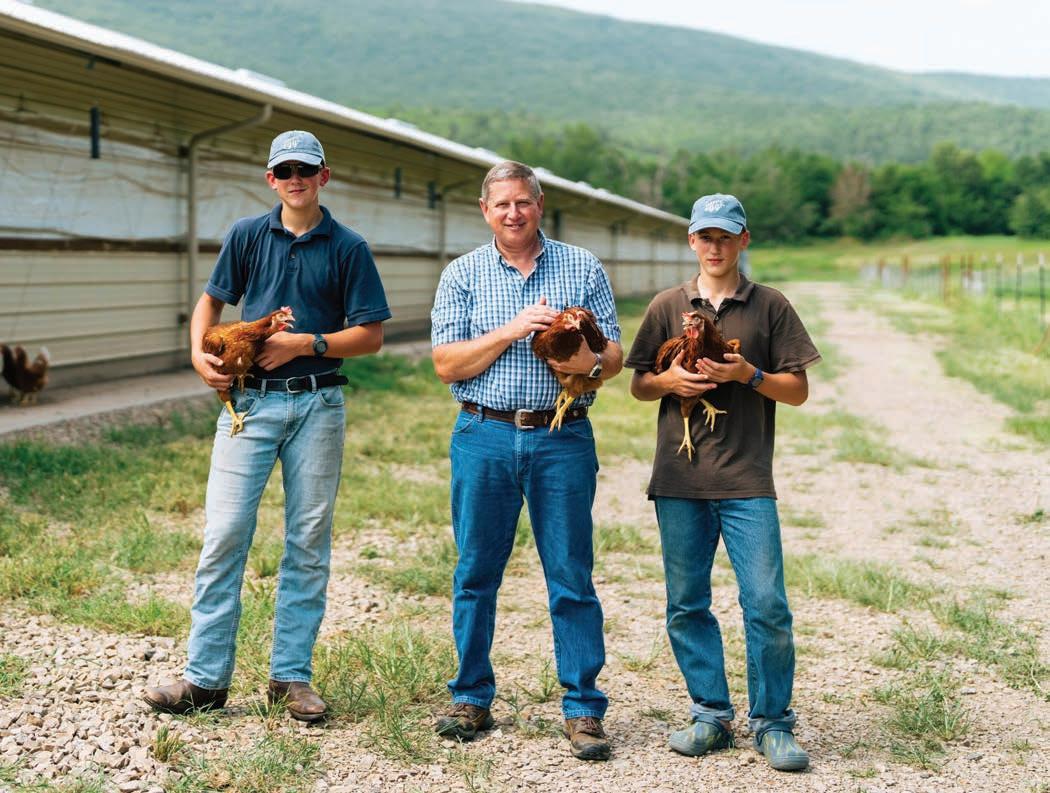
By partnering with more individuals, Happy Egg Co. aims to support the livelihoods of local farmers and contribute to the “Heartland” economy, while meeting a growing demand for its free-range eggs sold at retailers across the country.
Happy Egg Co. photo
Happy Egg Co. seeks additional farmers in America’s ‘heartland’
BY ELIZABETH BOBENHAUSEN
“As much as we care about getting our eggs to store shelves, we are even more passionate about the people behind them.”
Poultry Times staff ebobenhausen@ poultrytimes.com
ROGERS, Ark. — Happy Egg Co. is looking for new farmers to help raise hens for its free-range egg brand. Keeping the thought of animal welfare and producing high quality eggs in mind, Happy Egg is searching for farmers that live in Arkansas, Missouri, Oklahoma, Kansas, and the immediate area.
The company, located in Rogers, Ark., is family owned. It partners with more than 100 dependent farms for the production of free-range eggs. By working with more farmers, the business notes that it will be able to contribute to the income of local farmers,
aid the heartland economy and supply the increasing demand for free range eggs across the country.
Applicants that have obtained experience in egg production are preferred, however, the company will consider anyone who meets the qualifications for working with Happy Egg. In order to qualify for employment, a farmer must own or have the ability to purchase 15 acres of land to manage.
“As much as we care about getting our eggs to store shelves, we are even more passionate about the people behind them,” Jack Luton, Happy Egg Co. vice president of operations, said. “By supporting our farmers with boots on the ground and serving as a trusted resource for them, we’ve been able to establish mutually ben-
eficial partnerships and are eager to expand our reach even further.”
Alex Worley, CEO of Happy Egg Co., added, “our farmers are at the core of everything we do. Thanks to their dedication to raising the standard, Happy Egg has become the leading free range egg brand in the country. Without them, we could not produce delicious eggs with deep orange yolks that consumers across the nation love.”
Happy Egg Co. notes that its hens are raised with 21.8 square feet of range per bird and are given 8-plus hours outdoors access a day, weather permitting. They are also provided with a fresh flow of water and a specially formulated diet, the company adds.
For farmers in the region interested in knowing more, visit https://happyeggfarms.com/ grower.
POULTRY TIMES POULTRYTIMES.COM 9-
PT
VIEWPOINT

Prevent, mitigate egg drop syndrome
COMMENTARY BY
DR. DENISE HEARD
U.S. Poultry & Egg Association
Dr. Denise Heard is director of research programs with the U.S. Poultry & Egg Association based in Tucker, Ga. She can be reached by e-mail at dheard@uspoultry.org.

TUCKER, Ga. — Egg drop syndrome 1976 (EDS-76) is a viral disease caused by Duck Atadenovirus A and is widespread among asymptomatic wild and domesticated waterfowl. EDS-76 infections in poultry were considered exotic to the United States.
In recent years and presently, the disease has been detected in domestic commercial layer and broiler breeder chickens resulting in significant economic losses. The disease is characterized by a decrease in egg production and soft or shellless eggs in birds that otherwise appear healthy.
The virus is transmitted both vertically and horizontally. It is unknown if mechanical vectors such as rodents and insects (i.e., flies, darkling beetles) play a role in transmission of EDS-76 from positive to negative farms. EDS-76 is not reportable to the USDA; however, it is reportable to the state veterinarian on a state-by-state basis.
Commercially licensed live and inactivated vaccines are available and used outside of the U.S. to limit vertical and horizontal transmission; however, there are currently no licensed EDS-76 vaccines available in the U.S. A special use permit was utilized to import a commercial inactivated EDS-76 vaccine for use in some affected states, following outbreaks in commercial birds.
Diagnostic tools for EDS-76 are limited in the U.S. In unvaccinated birds, detection of antibodies by the hemagglutination inhibition (HI) or enzyme-linked immunosorbent assay (ELISA) are the primary means of confirmatory diagnosis. Detection of EDS-76 DNA by real time PCR (qPCR) is utilized on suspect clinical cases. Detection of EDS-76 DNA by polymerase chain reaction (PCR) can also be utilized.
Isolation of EDS-76 is complicated as it does not replicate well in chicken embryos or chicken embryo cell cultures, but rather duck em -
“In recent years and presently, the disease has been detected in domestic commercial layer and broiler breeder chickens resulting in significant economic losses.”
bryo fibroblasts (DEF). In the U.S., there are no commercial sources for specific pathogen-free (SPF) duck eggs so confirmatory diagnosis is made by EDS-76 HIs, ELISAs or PCRs. EDS-76 qPCR is not capable of determining if cleaning and disinfection efforts are successful at eliminating live virus nor is it capable of identifying the highest risk areas during and after an infection. During the USPOULTRY 2023 Fall research competition, a project was funded to address the diagnostic limitations around EDS in the U.S. The principal investigator for the
POULTRY TIMES POULTRYTIMES.COM 10
POULTRY TIMES POULTRY TIMES
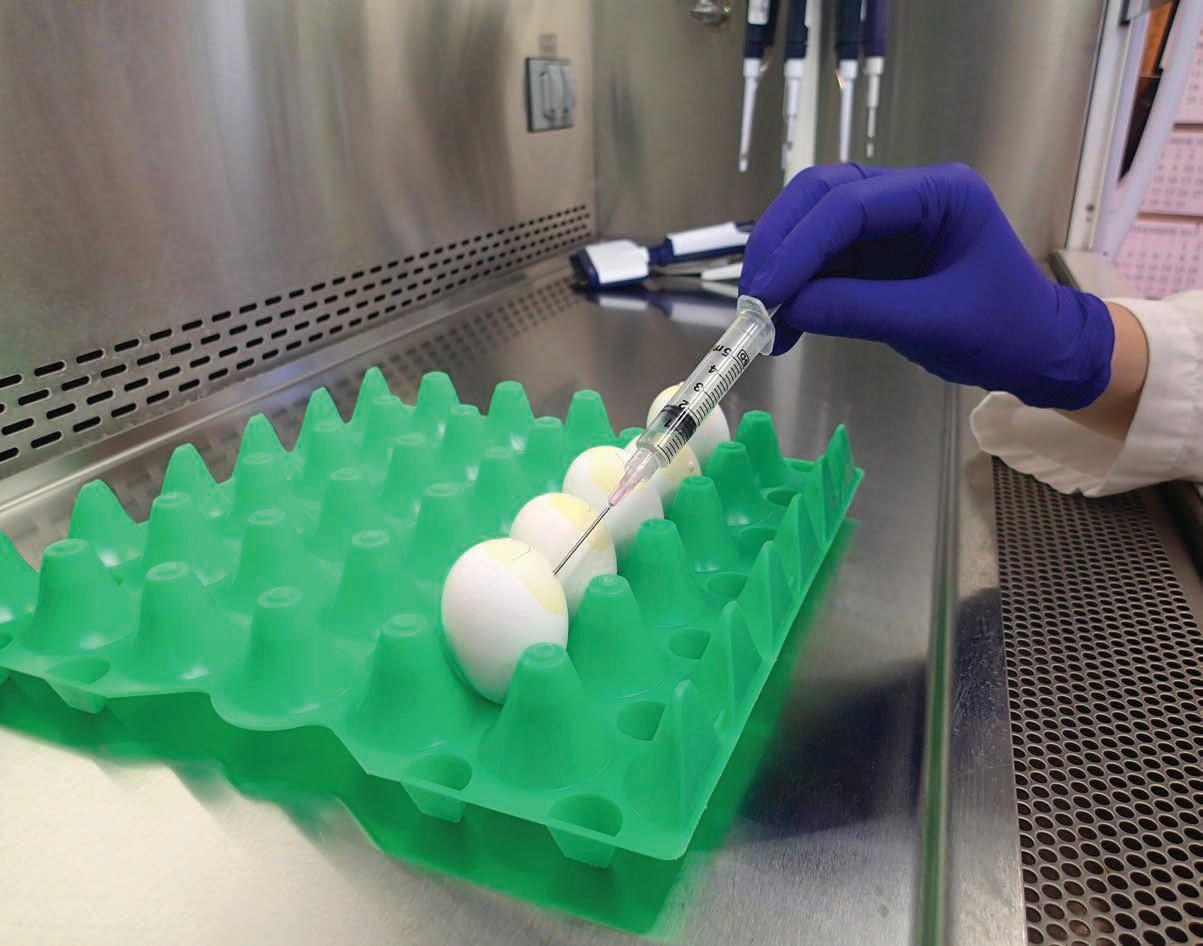
project is Dr. Jenny Nicholds, clinical associate professor, within the Poultry Diagnostic and Research Center at the University of Georgia.
The primary goal of this project is to determine the distribution of viable virus in an infected poultry house environment, as well as determine the effectiveness of cleaning and disinfection (C&D) on a previously infected farm.
A duck embryo fibroblast cell line has been procured to evaluate its feasibility for use in primary isolation of EDS-76 from clinical samples that have previously tested positive for EDS-76 by PCR. Successful isolation of EDS-76 viruses in this cell line may provide a reliable

diagnostic system to benefit the layer and broiler breeder industry for important testing of samples from affected birds, as well as, following C&D (Objective 1). Statistical analysis of seroconversion and viral shedding of vaccinated and unvaccinated birds placed on positive farms would also clarify serological responses that can further guide the development of preventative and mitigation strategies (Objective 2 and 3).
It is not well understood whether mechanical vectors
such as rodents, flies or darkling beetles play a role in transmitting EDS-76 between farms. Evaluating EDS-76 DNA from potential vectors can provide a better understanding of the risk of mechanical transmission and aid in prevention and mitigation strategies of the disease (Objective 4). By the completion of this project, virus isolation will be performed on EDS-76 PCR positive clinical samples to determine a suitable laboratory system for EDS-76. This system can be utilized to determine distance and distri-
bution of virus during a transmission event and to determine if current C&D processes are effective to reduce virus load from infected premises. Serological and viral shedding surveillance will be conducted on flocks pre- and post-vaccination as well as prior to and post-placement on previously EDS-76 positive farms using EDS-76 HIs and ELISAs. Vectors for EDS-76 will be assessed by evaluating rodents, flies and beetles on positive and negative farms using EDS-76 qPCR. Completion of this study may provide the egg laying industry with valuable information on further methods to prevent and mitigate the growing concern of EDS-76 in their operations.
POULTRY TIMES POULTRYTIMES.COM 11
U.S.,U.S.
USDA Agricultural Research Service

POULTRY TIMES
BUSINESS Neogen Corp. celebrating 40 years of Petrifilm
LANSING, Mich. — Neogen® Corp. is celebrating its 40th anniversary with Petrifilm, an innovation that changed how microbiologists around the world perform indicator testing, the company announced.
“In the food safety industry, Petrifilm is recognized as a true game-changer,” said John Adent, Neogen’s president and CEO. “To have this groundbreaking solution as part of the Neogen portfolio showcases our commitment to providing best-in-class solutions that are innovative, efficient, and sustainable, saving our customers time and money. We are committed to continuing to provide high-quality, dependable solutions that keep Neogen at the forefront of the industry as a global leader in food safety.”
Introduced in 1984, Petrifilm eliminates the need for traditional agar preparation, saving time and offering consistent, uniform testing media. Forty years later, Petrifilm has become one of the world’s most trusted tests, with more than 2.85 billion plates used across more than 60 countries, earning 105-plus global validations, certifications, and recognitions, Neogen added.
As the first dry-film plate technology, Petrifilm revolutionized the way laboratories operate, putting the focus on quality and efficiency, the company noted, adding that, laboratories gain an average of 48 percent enhanced productivity, receive results in up to half the time, and use less space than the traditional agar methods. With a variety of testing options, Petrifilm can be trusted to meet customers’ unique testing needs.
In 2021, the Petrifilm Plate Reader Advanced was launched. Counting up to 900 Petrifilm Plates per hour, it advances efficiency by automating the imaging, interpretation, and tracking of results, reducing enumeration time by up to 94 percent, Neogen said. It was named a gold winner in the Commercial Technology category at the 2022 Edison Awards and received the 2023 Red Dot Award in the Product Design category.
To learn more, visit www.neogen.com/ petrifilm.
Salmonella detection
Neogen has also announced the launch of the new Neogen Molecular Detection Assay 2 — Salmonella Enteritidis/Salmonella Typhimurium (MDA2SEST).
The product joins several other next-


generation assays, including Salmonella, E. coli O157 (including H7), Listeria and Listeria monocytogenes, Campylobacter, STEC gene screen (stx and eae), and Cronobacter, as part of the Neogen Molecular Detection System pathogen testing platform.
“We are pleased to bring this advanced technology to our customers, helping them to enhance their food safety program and address a challenging need in the poultry industry,” Adent said. “This isothermal molecular assay overcomes certain limitations of existing solutions, such as traditional serology and PCR-based methods, with improved accuracy, reduced time to results, and a streamlined workflow that provides increased productivity and unparalleled ease of use.”
The Neogen MDA2SEST kit is used with the Neogen Molecular Detection System for rapid and specific detection of two Salmonella serotypes, Salmonella enterica subsp. enterica serotype Enteritidis (SE) and Salmonella enterica subsp. enterica serotype Typhimurium (including monophasic variant 1,4,[5],12:i:-) (ST), in enriched poultry samples, the company said, adding that, Salmonella Enteritidis and Salmonella
Typhimurium are two serotypes that are pathogenic to humans and have been implicated in Salmonella outbreaks. By enabling the detection of specific serotypes such as S. Enteritidis and S. Typhimurium, the MDA2SEST assay is an important tool that can help reduce foodborne illness.
The Neogen MDA2SEST was granted approval by the AOAC® Research Institute Performance Tested Methods Program and assigned PTM Certification No. 122302. The PTM Program provides independent thirdparty review and certification for proprietary test method performance.
The award-winning Neogen Molecular Detection System platform is used by food processors, universities, governments, and contract testing laboratories in more than 40 countries. It is powered by a combination of advanced technologies — isothermal DNA amplification and bioluminescence detection — to provide a pathogen testing solution that is fast, accurate, easy to use, and affordable. The new assay for Salmonella Enteritidis and Salmonella Typhimurium joins, and can be run concurrently with, molecular tests already offered by Neogen for Salmonella, E. coli O157 (including H7), Listeria and Listeria monocytogenes, Campylobacter, STEC gene screen (stx and eae), and Cronobacter, Neogen said.
For more information, visit www.neogen. com/molecular-detection-system..
POULTRY TIMES POULTRYTIMES.COM 12
POULTRY
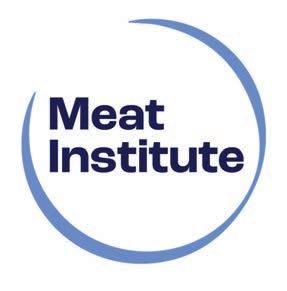
Meat Institute: Properly prepared beef remains safe
WASHINGTON — As the USDA issued a nationwide order including requiring lactating dairy cows to test negative for Highly Pathogenic Avian Influenza (HPAI) before interstate transport, the Meat Institute notes that properly prepared beef remains safe to eat and called for USDA and the Centers for Disease Control and Prevention (CDC) to provide worker safety guidance specific to beef processors to ensure workers are protected from infection.
“USDA and CDC are working overtime to understand the spread of the virus and to determine its effects on the health of people and animals,” said Julie Anna Potts, president and CEO of the Meat Institute.
“We encourage USDA and CDC to conduct additional testing and monitoring to continue to ensure properly prepared beef remains safe to eat. We are also calling on USDA and CDC to issue additional, specific guidance for beef processing facilities to ensure USDA inspectors and meat company workers are protected from infection.”
“It is important to ensure the free flow of healthy animals to slaughter. The Meat Institute and its members will continue to work with USDA, state and local veterinarians and our cattle producer partners to both stop the spread of the virus and to ensure beef production continues,” Potts added.
“We call on Biden Administration officials to anticipate international trade concerns
and encourage our trading partners to abide by internationally recognized scientific standards as determined by the World Organization for Animal Health (WOAH),” Potts noted.
Dairy cows make-up 6.8 percent of total beef production in the U.S. Resources on safe beef and poultry handling from the USDA’s Food Safety and Inspection Service can be obtained at www.fsis.usda.gov.
Perdue Farms backs volunteer fire company with grant worth $42,500
BLOXOM, Va. — The Franklin P. and Arthur W. Perdue Foundation, the philanthropic partner of Perdue Farms, has awarded a $42,500 grant to aid the Bloxom Volunteer Fire Co. in the purchase of state-ofthe-art emergency response equipment to serve Accomack County, Va.
“We’re grateful to Perdue for this generous gift to replace equipment that was purchased in 1994 and currently doesn’t meet today’s standards,” said Bloxom Volunteer Fire Department Chief James Bagwell. “The new equipment — the jaws of life, stabilizing struts and lifting airbags — will be faster, lighter, and safer for our first responders and ensure that we can provide the best care to save lives in our community.”
The grant from the Perdue Foundation is part of the company’s Delivering Hope to Our Neighbors® outreach to improve quality of life and build strong communities where Perdue associates live and work.
Perdue’s Accomac operations are in the Bloxom VFD’s response area. The 104-yearold Maryland-based company has had operations in Accomack County for more than 50 years. It employs more than 1,500 associates in the county and provides economic impact of nearly $440 million.
“At Perdue, we salute those
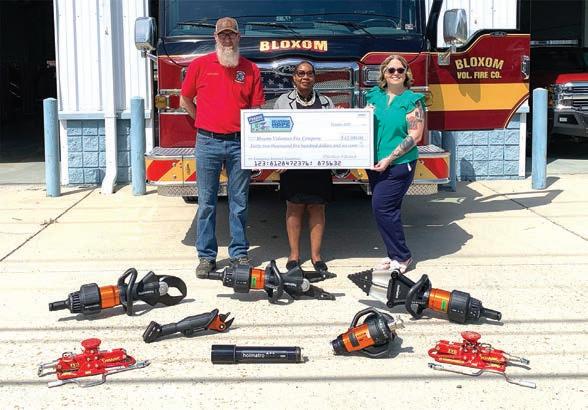
who dedicate themselves to the service of others in our communities,” said Kim Nechay, executive director of the Perdue Foundation. “We appreciate the sacrifice of those men and women representing the Bloxom Volunteer Fire Company and their efforts to keep Virginia’s Eastern Shore and our associates and neighbors safe. Knowing we can depend on Bloxom VFD gives us peace of mind. We’re happy to award this grant to the fire company.”

Inaugural USPOULTRY
PHIS Workshop explores function and noncompliance record response
TUCKER, Ga. — The U.S. Poultry & Egg Association hosted its inaugural Public Health Information System (PHIS) Workshop on April 17. Developed in partnership with the Food Safety Advisory Committee, the workshop assisted attendees with navigating the PHIS interface and appropriately responding to USDA noncompliance records.
Corporate and plant personnel from the broiler and duck industry were represented at the meeting, as PHIS allows for various scopes of access.
The PHIS site contains information about processing facilities that can be particularly useful in supporting an overall food safety program. However, navigating the interface, downloading needed data, and interacting with noncompliance records (NRs) and memorandum of interviews (MOIs) takes time. Attendees learned how to ensure that the information contained in PHIS is accurate, as well as being able to assign responsibilities and track public health regulations (PHRs). The reporting capabilities of PHIS were also explored to become proficient in generating reports that can inform daily and strategic goals.
Responding to official communication within PHIS was another aspect that was addressed, including accessing and responding to NRs and MOIs, monitoring relevant regulations cited and appealing inaccuracies. Further, the interaction among the participants allowed for the opportunity to discuss real-world cases.
Since providing a primer on effective use of PHIS, additional programming focused on the effective use of this tool will be forthcoming, incorporating feedback from attendees as well as the Food Safety Advisory Committee.
More information on upcoming USPOULTRY workshops and seminars can be found at www.uspoultry.org/ programs/education/seminar/.
(Continued on next page)
POULTRY TIMES POULTRYTIMES.COM 13
Vital Farms’ Egg
Central Station earns LEED certification
AUSTIN, Texas — Vital
Farms’ 2022 expansion of its egg washing and packing facility, Egg Central Station in Springfield, Mo., has been awarded LEED® Gold Certification for New Construction and Major Renovations. LEED (Leadership in Energy and Environmental Design) is the U.S. Green Building Council’s
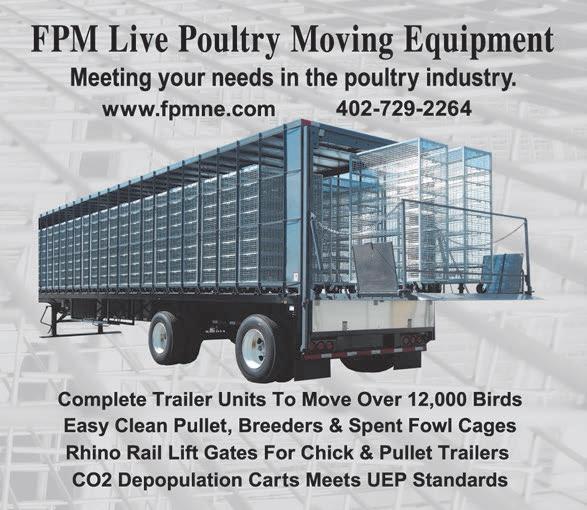
internationally recognized green building rating system and a symbol of excellence in environmental stewardship.
This prestigious acknowledgment underscores Vital Farms’ commitment to raising the standards in the food industry and progress made towards the company’s impact goal of reducing operational greenhouse gas intensity by 25 percent by 2027, the company said.
“When we designed Egg Central Station and its expansion, we challenged ourselves to build a facility that fully embodies our purpose—to improve the lives of people, animals, and planet,” said Russell Diez-Canseco, president and CEO, Vital Farms. “ECS is a critical part of our differentiated, resilient supply chain. And it’s a competitive advantage for us to deliver high quality, ethically produced products across the country. This award is a testament to both the team that designed and developed ECS, as well as the talented crew that works there every day.”
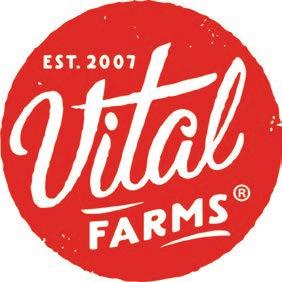
Egg Central Station is at the heart of Vital Farms’ supply chain and operations, the company said, adding that pasture-raised eggs from the company’s network of more than 300 family farms are transported to the facility to be washed, sized, graded, and packed before their journey to retailers and foodservice operators across the country.




After ECS’ initial opening in 2017, Vital Farms expanded the facility’s footprint in 2022, nearly doubling its original size to support more than $300 million in additional revenue and the future growth of the company. ECS currently processes up to 6 million eggs a day and recently achieved an important milestone to meet zero-waste-to-landfill production standards, the company said.
The overall project was intentionally designed with the company’s crewmembers, community, and the planet in mind, Vital Farms added. Inside the facility there are features such as daylighting and climate control to improve the crewmember experience, food safety practices that go above and beyond current regulatory requirements, and advanced water filtration systems. On the facility’s grounds, solar panels generate renewable energy while providing parking shade, bioretention elements clean and cool rainwater, and natural landscaping thrives with vegetation native to the Ozarks. Additional construction elements including the use of low-VOC emitting materials and finishes made from high recycled content helped the expansion earn LEED Gold Certification.
Buildings can earn one of four LEED rating levels — Cer-
POULTRY TIMES POULTRYTIMES.COM 14 14
(Continued from previous page)
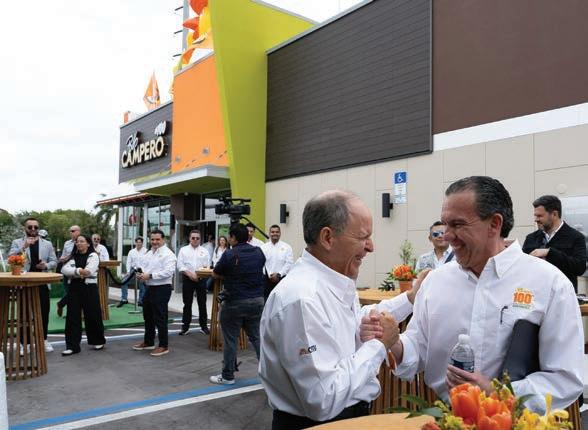
tified, Silver, Gold or Platinum — based on criteria including energy efficiency, water conservation, waste reduction, and indoor air quality. Egg Central Station notably scored extra points in the “Innovation in Design” section for crewmember education, green cleaning protocols, and pest management, the company noted.
For more information, visit https://vitalfarms.com/.
Pollo Campero celebrates 100th U.S. location
DALLAS — Pollo Campero’s parent company, CMI Foods, recently opened its 100th fastcasual restaurant in the United States as part of its $190 million
commitment to growing the brand, part of CMI’s larger $1.8 billion investment plan.
This milestone underscores CMI’s dedication to growth and innovation in the U.S. and its decades-long business history that began in Guatemala, the company said, adding that this 100th location opening represents CMI’s vision to bring Pollo Campero, which has a cult-like following in Latin America, to millions of new customers in communities across the nation.
“Each step forward in our growth plan helps to realize the dream of our founders and is the result of the passion for the brand that we all share,” said CMI Foods Chairman Juan Jose Gutierrez. “Pollo Campero’s expansion in new communities across the U.S. reflects our larger commitment to creating opportunities that change lives and delivering exceptional flavors to families across the globe.”
The 100th U.S. Pollo Campero opened in Miami Gardens, Fla., but the brand’s story began in 1971 as a modest family-owned restaurant in Guatemala. Its
first U.S. location opened in 2002, and the brand has maintained steady and deliberate growth ever since, bringing the unique flavors of Central America to millions, the company added.
With a strategic vision for expansion, Pollo Campero has ambitious plans to open at least 25 new U.S. restaurants by the end of this year, the company noted. It also reports that it plans to grow its U.S. footprint to 250 locations by 2028.
“This is just the beginning –if we can do 100, we can open 1,000,” said Campero USA Managing Director and Chief Operating Officer Luis Javier Rodas. “It’s an exciting time for the brand as we continue to grow our fan base and spread the passion that so many people in Latin America have for our unique flavors in the competitive U.S. market.”
Much of the $1.8 billion CMI investment will go toward its expansion in Central America, growing its CMI Foods division, which includes wheat flour
(Continued on next page)

POULTRY TIMES POULTRYTIMES.COM 15
(Continued from previous page)
mills and packaged goods and meat production operations, and technology and sustainability projects. The investment also highlights the company’s positive economic impact. It is expected to create more than 40,000 direct jobs globally, fostering economic growth and spurring innovation and infrastructure improvement.
There are nearly 400 Pollo Campero locations worldwide in countries that include El Salvador, Honduras, Spain, Belize, Brazil, Italy and more. CMI will soon open its 150th Pollo Campero restaurant in Guatemala.
Report: Egg powder market size projected to reach $4B by 2033
PUNE, India — Market research company, The Brainy Insights, estimates that the $1.95

billion in 2023 egg powder market will reach $4 billion by 2033.
Egg powders are versatile, easy to work with, and have a long shelf life, the company noted, adding that it’s anticipated that the market for this product will grow moderately during the forecast period. Also, given the growing demand for “free-from” products, it is projected that manufacturers will be able to take advantage of this opportunity to produce new items in the egg powder market.
The Asia Pacific market is expected to grow at the highest CAGR (compound annual growth rate) of 9.67 percent during the forecast period. Because of its thriving agricultural industry, the Asia-Pacific area offers a consistent and dependable supply of eggs that can be turned into powder, The Brainy Insights report said. The consumption of food products with added value, such as egg powder, has been driven by the
region’s economic growth and development, which has also enhanced consumer purchasing power.
The whole egg powder segment is anticipated to grow at the highest CAGR of 10.87 percent in the egg powder market, the report said. This market’s significant expansion is also driven by the growing demand for convenient and nutrientdense food products, which are in line with customer preferences for healthier options. The domination of whole egg powder reflects its versatility, nutritional content, and shelf life, making it an important player in the world market.
During the forecasted period, the hypermarkets/supermarkets segment is anticipated to grow at the highest CAGR of 10.26 percent in the egg powder market, the company noted. It is because of its many uses in baked goods, processed meals, and culinary preparations. Supermarkets and hypermarkets effectively meet this demand by giving customers a place to get various goods, including egg powder.
Raydiant teams up with O’Neal’s Big Chicken to revamp in-store experience
SAN FRANCISCO — Raydiant, an in-location experience platform, has announced a new partnership with Shaquille O’Neal-owned Big Chicken, a chicken concept known for its “larger-than-life” menu items and team-ups with cruise ship and aerospace partners.
Big Chicken approached Raydiant in 2023 with a challenge to enhance the in-restaurant experience across all the brand’s franchise locations. Over several meetings, Raydiant demonstrated how its cloud-based system, which seamlessly integrates with Big Chicken’s strategic provider partner PAR/Brink, could power digital menu boards and enable real-time content updates
(Continued on page 18)

POULTRY TIMES POULTRYTIMES.COM 16


--POULTRY TIMES POULTRYTIMES.COM 17
(Continued from page 16)
based on item availability or limited-time promotions, the companies noted.
The solution proved highly successful and brought substantial return on investment to Big Chicken, leading to excitement about rolling out Raydiant as a main tech solution for all store locations, the companies added.
As part of the partnership, Raydiant will provide service to all locations, handling content creation and management for digital screens on behalf of the brand. Raydiant also showcased its offerings to franchisees at Big Chicken’s recent annual franchisee meeting, generating significant interest and commitments from more than 10 franchise owners to implement the solution.
“We are thrilled to be selected as Big Chicken’s digital experience and in-location operating system partner,” said Bobby Marhamat, CEO of Raydiant. “This partnership is a testament to our platform’s impact on brick-and-mortar brands looking to create more engaging in-location experiences that drive repeat visits and revenue. We look forward to building on our success and bringing Big Chicken’s lively in-restaurant experience to fruition across all locations.”
The companies are also exploring future solutions, including drive-thru signage, programmatic advertising opportunities, and deploying Raydiant’s Visitor Insight offering to provide location-based analytics on customer behavior.
For more information about Big Chicken, visit www.bigchicken.com.
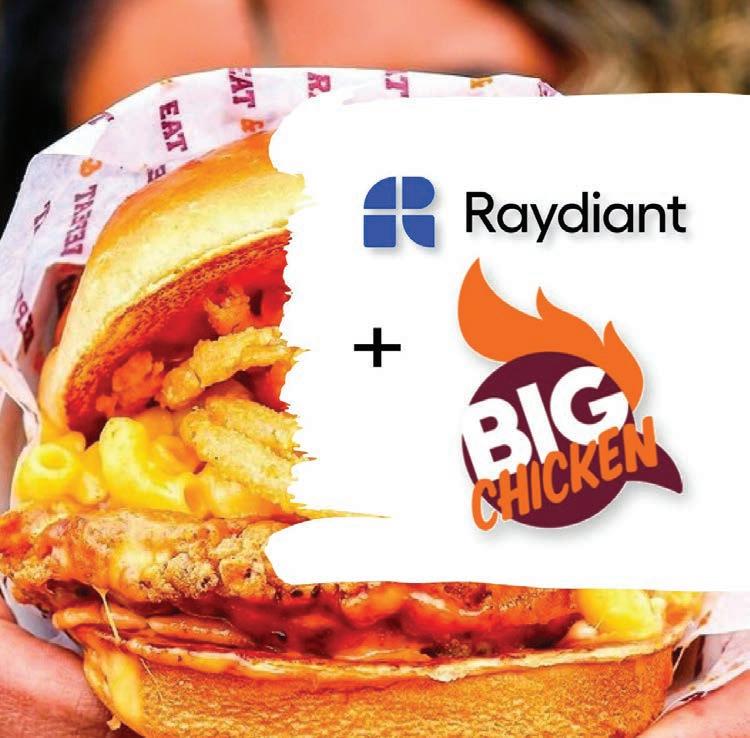

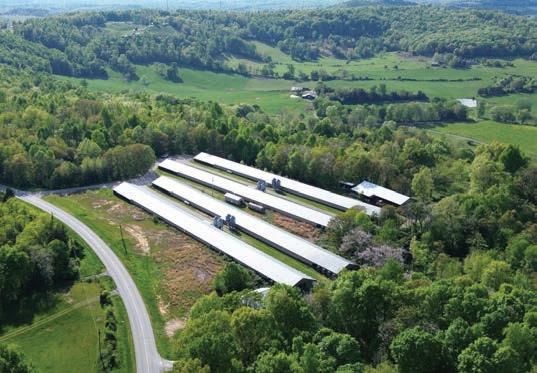
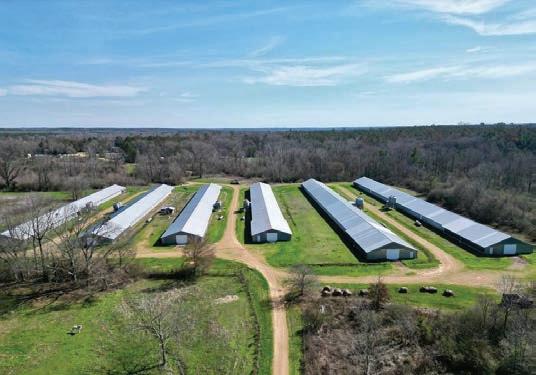

POULTRY TIMES POULTRYTIMES.COM 18 POULTRY FARMS FOUR-HOUSE POULTRY FARM - Byrdstown, TN 16.4± Acres | $825,000 | #16052-02021 SPACIOUS FARM - Union Church, MS 53± Acres | $1,195,000 | #23042-40868
SELLER OF Contact Us Today | 800.999.1020 | Farms.UnitedCountry.com
FARMSnationwide
LEADING
POULTRY
FDA says milk supply safe after some AI positive test samples
BY ELIZABETH BOBENHAUSEN Poultry Times staff ebobenhausen@
poultrytimes.com
GAINESVILLE, Ga. — The U.S. Food and Drug Administration has announced that some milk samples they tested came back positive for avian influenza which is believed to have infected cattle, the Associated Press and other news outlets reported.
Have
The agency remains ongoing in studying the problem. The FDA said in a release, “to date, we have seen nothing that would change our assessment that the commercial milk supply is safe.”

Face greater lumen depreciation than you expected?
The FDA said that the virus was not active and the tests “do not represent actual virus that may be a risk to consumers.”
The FDA did not disclose how many samples were examined or where the samples were acquired. The agency has been monitoring milk being processed and milk coming from grocery stores. More results from the tests are coming in a few days or weeks.
Lee-Ann Jaykus, an emeritus food microbiologist and virolo -
gist at North Carolina State University, said, “the PCR lab test the FDA used would have detected viral genetic material even after live virus was killed by pasteurization, or heat treatment. There is no evidence to date that this is infectious virus, and the FDA is following up on that.”
Officials at the FDA and the
USDA have stated that milk from ill cattle will not enter the food supply. The milk that has been contaminated is to be destroyed and deterred. Federal regulations say milk must be pasteurized before being sold. In its statement the FDA warned, “consumers not to consume raw milk (milk that has not been pasteurized).”
It’s time to look at what’s controlling your light bulbs.













LED by Innovation of Dimmable LED Lamps that
Have shortened life hours?
Face greater lumen depreciation than you expected?
Flickering at different lighting levels
Flickering at different lighting levels especially low light levels?





-
6/10/15W
Directional

- Directional Beam Angled LED's - designed with the exact beam angle to offer even FC lighting on the floor based on poultry house spacings/specs.
- Directional beam angle lamps offer 100% dimming while Omni lamps typically wont dim below 25%.





Dim/ 14/26W Non Dim models 10/16/25W Dimm models
*Energy Star Approved for rebates
*Constant Current Driver delivers full current/wattage with minimal lumen loss at low voltages.
*CONSTANT CURRENT DRIVERS ARE A FEATURE THAT OVERDRIVE COMPETITORS DO NOT OFFER!
POULTRY TIMES POULTRYTIMES.COM 19 LED by Innovation 100% PURE TRAILING EDGE
Silicone Protection Gasket
of Dimmable
TIRED Poultry Dimmer
LED Lamp that
www.aglights.com/800-657-0509
LED by Innovation 100% PURE TRAILING EDGE It’s
light bulbs. Silicone Protection Gasket
time to look at what’s controlling your
10/16/25W Dimm models of Dimmable LED Lamps that TIRED Poultry Dimmer www.aglights.com/800-657-0509 Have shortened life hours?
6/10/15W Directional Dim/ Non-Dim
Face greater lumen depreciation than you expected?
especially low light levels?
Star Approved for rebates *Constant Current Driver delivers full current/wattage with minimal lumen loss at low voltages. CONSTANT CURRENT DRIVERS ARE A FEATURE THAT OVERDRIVE COMPETITORS DO NOT OFFER!
*Energy
Directional Beam Angled LED's - designed with the exact beam angle to offer even FC lighting on the floor based on poultry house spacings/specs.
Directional beam angle lamps offer 100% dimming while Omni lamps typically wont dim below 25%. LED by Innovation 100% PURE TRAILING ‘Trailing Edge’
design is the only option for: It’s time to look at what’s controlling Let us help you solve the problem!!! BEST LED control Full LED Life Low Level Dim Opstion Silicone Protection Gasket 6/10/15W Directional Dim/ Non-Dim 14/26W Non Dim 10/16/25W Dimm of Dimmable LED Lamps that TIRED ONLY Poultry www.aglights.com/800-657-0509
-
Dimmer
at different lighting levels especially low light levels? *Available with Junction *Energy StarApproved *IP66 Wet located *Constant Current with minimal lumen *CONSTANT ARE A FEATURE COMPETITORS -Directional Beam Angled LED's - designed with the exact beam angle to offer even FC lighting on the floor based on poultry house spacings/specs. - Directional beam angle lamps offer 100% dimming while Omni lamps typically wont dim below 25%. 100% PURE TRAILING EDGE ‘Trailing Edge’ Dimmer design is the only option for: It’s time to look at what’s controlling your light bulbs. Let us help you solve the problem!!! BEST LED control Full LED Life Low Level Dim Opstion Silicone Protection Gasket 6/10/15W Directional Dim/ Non-Dim 14/26W Non Dim models 10/16/25W Dimm models AskusaboutourNEWFeederlights The ONE & ONLY Poultry Dimmer www.aglights.com/800-657-0509 *Available with Junction Boxes. *Energy Star Approved for rebates *IP66 Wet located rated *Constant Current Driver delivers full current/wattage with minimal lumen loss at low voltages. *CONSTANT CURRENT DRIVERS ARE A FEATURE THAT OVERDRIVE COMPETITORS DO NOT OFFER! - Directional Beam Angled LED's - designed with the exact beam angle to offer even FC lighting on the floor based on poultry house spacings/specs. - Directional beam angle lamps offer 100% dimming while Omni lamps typically wont dim below 25%.
shortened life hours?
Flickering
Have shortened life hours? Face greater lumen depreciation than you expected?
TIRED
PT
New USDA requirements for livestock movement
BY ELIZABETH BOBENHAUSEN Poultry Times staff
ebobenhausen@ poultrytimes.com
WASHINGTON — To help prevent additional cattle from contracting avian influenza, the USDA Animal and Plant Health Inspection Service (APHIS) is establishing new regulations for interstate exchange of cattle.
These regulations will go into effect on April 29, 2024.
According to the USDA, the regulations include:
For mandatory testing of interstate movement of dairy cattle.
• Prior to interstate movement, dairy cattle are required to receive a negative test for Influenza A virus at an approved National Animal Health Laboratory Network (NAHLN) laboratory.
• Owners of herds in which dairy cattle test positive for interstate movement will be required to provide epidemiological information, including animal movement tracing.
• Dairy cattle moving interstate must adhere to conditions specified by APHIS.
• As will be described in forthcoming guidance, these steps will be immediately required for lactating dairy cattle, while these requirements for other classes of dairy cattle will be based on scientific factors concerning the virus and its evolving risk profile.
For mandatory reporting.
• Laboratories and state veterinarians must report positive Influenza A nucleic acid detection diagnostic results (e.g. PCR or genetic sequencing) in livestock to APHIS.
Introducing EAGAN FAST TRACK
Wall Vents


• Laboratories and state veterinarians must report positive Influenza A serology diagnostic results in livestock to APHIS.
“The novel movement of H5N1 between wild birds and dairy cows requires further testing and time to develop a critical understanding to support any future courses of action,” APHIS said. “Requiring positive test reporting will help USDA better understand this disease and testing before interstate movement will limit its spread.”
The USDA, the U.S. Food and Drug Administration and the Centers for Disease Control and Prevention were made aware of the spread of bird flu in cattle almost a month ago. The disease is mostly found in birds. The USDA said that the states of Kansas, Texas, New Mexico, Idaho and Michigan have reported finding HPAI in their
cattle. It was the first time bird flu had been detected in cows. One person in Texas was infected with the disease, causing pink eye.
The American Association of Bovine Practitioners suggested that it be called Bovine Influenza A Virus (BIAV) to differentiate the virus among birds and cows. The organization said, “We encourage other organizations, state animal health officials, diagnostic labs and state and federal agencies to use this name so that we can be consistent with our messaging and better distinguish the disease syndrome in cattle from the pathogenesis observed in birds. We believe it is important for the public to understand the difference to maintain confidence in the safety and accessibility of beef and dairy products for consumers.”

FAST TRACK Wall Vents
Our new Fast Track Wall Vent (U.S. Patent No. 11,33,392) takes the concept of a wall vent to the next level. It comes fully assembled right out of the box, goes up very quickly and is very competitively priced. Wall Vent Features
Δ Available with an Aluminum or UV stabilized PVC frame
Δ Superior performance
Δ Integrated track cord tensioner/locator
Δ Integrated winter latching system

Δ Cord guide included along with installation jig to speed up installation


Δ Available in 8”,10’, 12”, 14” heights with custom lengths available
Δ Perfect for retrofit applications-the wall vent is surface mounted to compensate for framing irregularities and can be ordered to fit virtually any opening
Δ Orders come bulk-packed in palletized gaylords to make it easier and faster on installation crews
POULTRY TIMES POULTRYTIMES.COM 20
602 EAGAN ROAD, P.O. BOX 620 BLACK ROCK, AR 72415
Aluminum
Wall Vent UV Stabilized PVC
Cord Guide Installation Tool
Framed Fast Track
Framed Wall Vent
PT

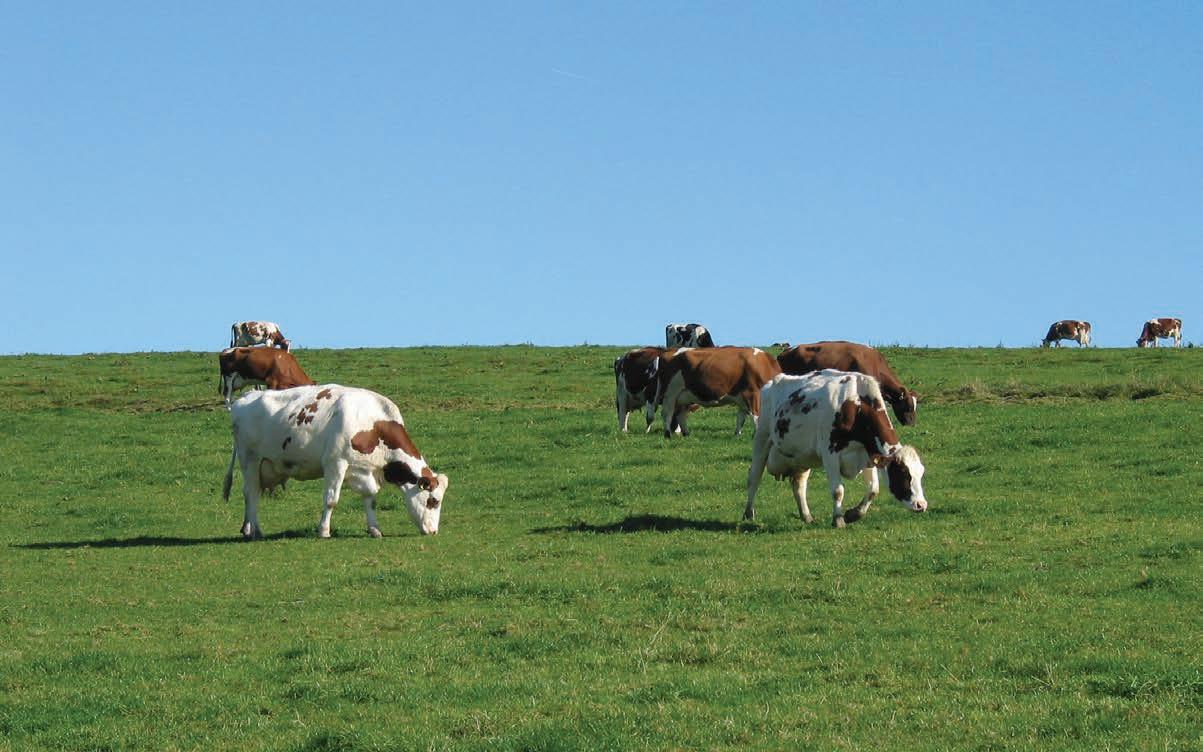




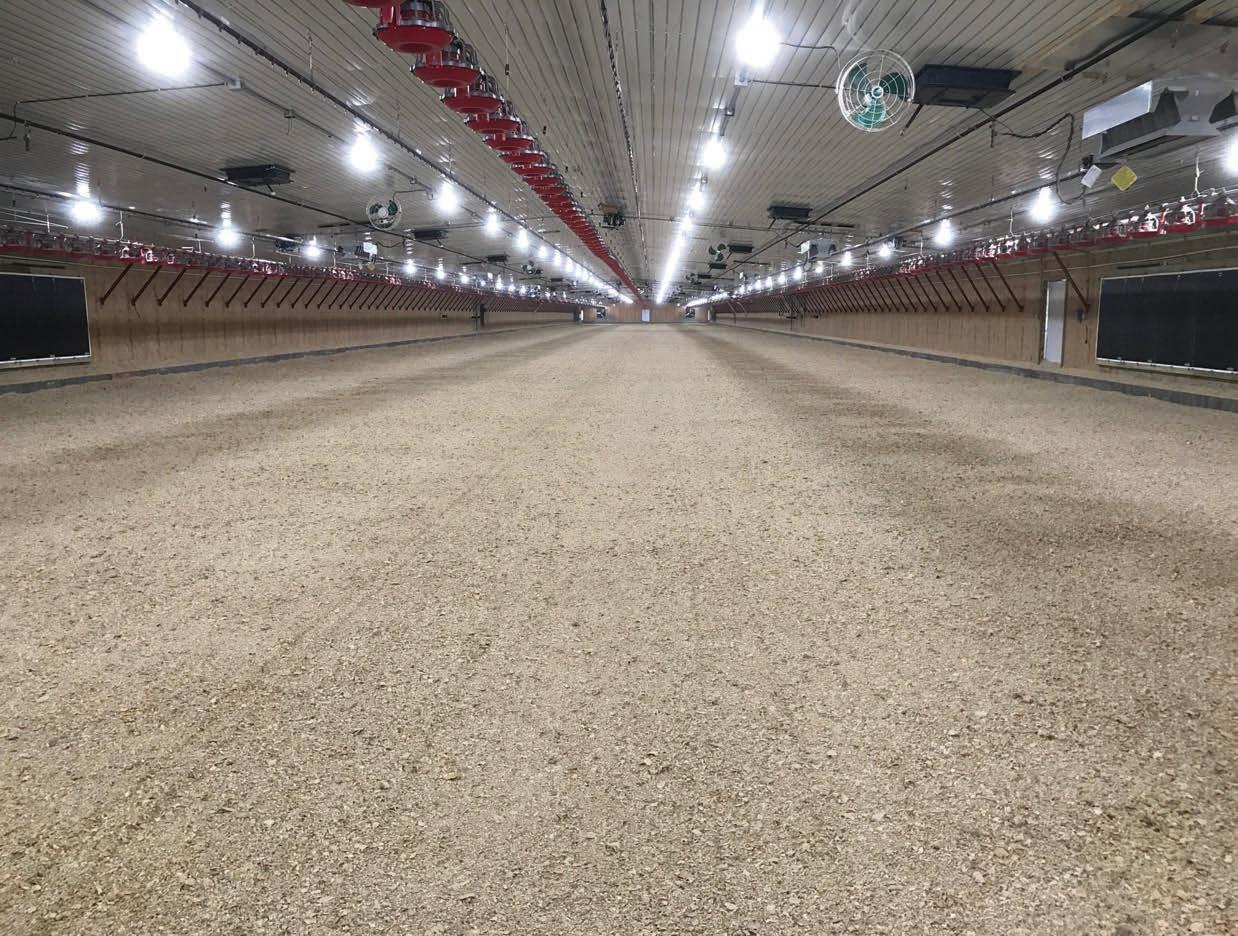



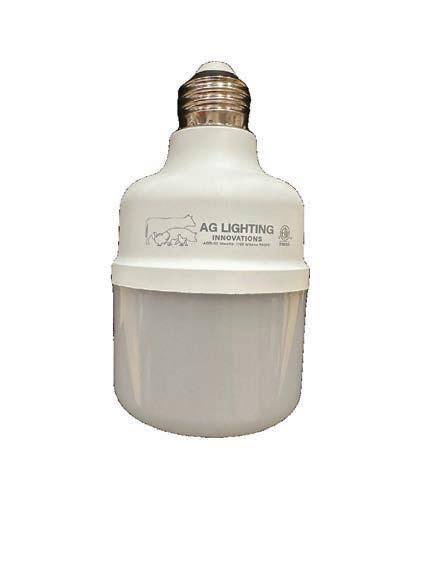
Retro Luminaire Retro Luminaire Retro Luminaire Modeled after our Modeled after our Modeled after our Farm-proven AG25 Farm-proven AG25 Farm-proven AG25 Half the lights Waterproof Low-profile Longer life Better Light. Better Life!-
PATENT PENDING
Bringing aviary visibility to another level


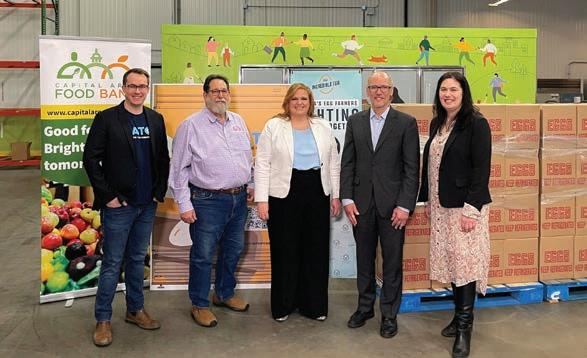
photo
The American Egg Board, Puglisi Egg Farms and Hatch for Hunger recently announced a donation of 64,000 eggs to the Capital Area Food Bank in Washington, D.C. On hand for the presentation were, left to right, Danny Leckie, CEO of HATCH for Hunger; John Puglisi, president of Puglisi Egg Farms; Emily Metz, AEB president and CEO; Tom Perez, senior advisor to the President of the United States; and Emily Lauer-Bader, director of corporate partnerships with Capital Area Food Bank.
The newest addition to Big Dutchman’s line-up of cage-free true aviaries, the NATURA® Visio is a two-tier aviary system that we are excited to introduce into the market. It features our unique “twin belt” design which allows for high visibility of the eggs on both tiers.
Contact your local distributor or sales representative to learn more.
Capital Area Food Bank receives donation of 64,000
eggs
BY ELIZABETH BOBENHAUSEN
Poultry Times staff ebobenhausen@ poultrytimes.com
WASHINGTON — The American Egg Board, Puglisi Egg Farms and HATCH for Hunger contributed 64,000 eggs and two sizable, refrigerated coolers to the Capital Area Food Bank in Washington D.C., which was announced during the White House Easter festivities on April 1.
President Biden’s senior advisor and director of the office of intergovernmental affairs, Tom Perez, also partook in the charity event. American egg farmers donated eggs through Puglisi Egg Farms located in Howell, N.J.
“America’s egg farmers, and really every farmer or person who produces food, strive to be a good neighbor, community member and business owner,” John Puglisi, president of Puglisi Egg Farms, said. “We want to help those in
need in our local communities. We’re proud to provide high-quality, nourishing eggs to food banks in our communities including the Capital Area Food Bank.”
“Households with kids are 60 percent more likely to be affected by food insecurity than households without kids,” Emily Lauer-Bader, director of corporate partnerships with Capital Area Food Bank, said. “Families need nourishing food, and many are struggling to access versatile, high-quality protein. Eggs are often one of the products most in demand. We are grateful to America’s egg farmers, Puglisi Egg Farms and HATCH for Hunger for their generous donation today.”
Along with the 64,000 eggs donated, other eggs were used for the Easter EGGucation Roll. Those eggs were used for the Easter egg hunt, decorating the eggs and entrees for food.
“Eggs are always in high demand at food banks and food pantries,” Emily Metz, president and CEO of the American Egg Board, said. “They’re a key part of the diet for many Americans, with 90 percent of American homes having eggs in their refrigerator. Access to good sources of protein, like eggs, really matters to communities facing hunger and food insecurity. America’s egg farmers are proud to provide eggs to families in need this Easter season and will continue donations to communities across the U.S. throughout the year.”
POULTRY TIMES POULTRYTIMES.COM 22 +1-616-582-4000 | bigd@bigdutchmanusa.com WWW.BIGDUTCHMANUSA.COM
AEB
PT


POULTRY TIMES POULTRYTIMES.COM 23


PT EPA will allow E15 fuel access for the summer
DAVID B. STRICKLAND Poultry Times Editor dstrickland@poultrytimes.com
WASHINGTON — The U.S. Environmental Protection Agency has recently announced that it has issued an emergency waiver that will extend the sale of E15 gasoline into the summer months.
E15 gasoline is fuel that is blended with 15 percent ethanol. It is usually not allowed in the warmer months through concerns that it contributes to emissions. The EPA says that it expects no significant impacts from its use in cars and trucks and that it also expects, “consumers can continue to use E15 without concern that its use in the summer will impact air quality.”
The agency also noted that this action was made to provide relief at the gas pumps that have stemmed from situations that have affected the market such as the wars in Ukraine and the Middle East.
“This waiver will help consumers protect themselves against fuel supply shocks by reducing our reliance on imported fossil fuels, continuing to bolster U.S. energy independence, all while supporting American agriculture and manufacturing,” EPA said.
The agency notes that E15 fuel is, on average,

about 25 cents per gallon cheaper than E10.
The EPA Administrator, through the Clean Air Act, and along with Department of Energy consultation, can apply waivers to certain requirements to help address fuel shortages.
EPA Administrator Michael S. Regan, said, “… EPA is taking action to protect Americans from fuel supply challenges resulting from ongoing conflict overseas by ensuring consumers have more choices at the pump. Allowing E15 sales during the summer driving season will increase fuel supply, while supporting American farmers, strengthening our nation’s energy security, and providing relief to drivers



across the country.”
This emergency fuel waiver goes into effect as of May 1, which would be the date when terminal operators in two-thirds of the country could no longer sell the fuel. The usual deadline for E15 fuel at retail stations is June 1, but this is being extended this summer.
This announcement also follows one in February when eight Midwestern governors gained EPA approval for the sale of E15 in their states, but this decision does not go into effect until summer 2025.
Praising this resolution is the National Corn Growers Association, along with other state corn grower groups, who have been advocating for the decision.
“This waiver is good news for corn growers and those in rural America who will benefit economically from this decision and for consumers who will save money at the pump during a busy travel season,” Harold Wolle, NCGA president and a Minnesota farmer. “We are deeply appreciative of EPA Administrator (Michael) Regan, President (Joe) Biden and our congressional allies for all their work on this issue.”
NCGA notes that currently nearly every gallon of U.S. gasoline has a minimum of 10 percent ethanol that was corn derived. The association also says that it is working with the petroleum industry and with federal legislators for year-round E15 fuel access.


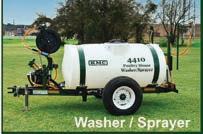


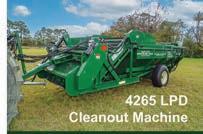

7300 Poultry House Blower Call us today to set up a free demo near you. 1-800-457-3720 www.weightechinc.com Bench
The WeighTech line of bench scales offers processors the best of both worlds: functionality and durability. Our bench scales feature our industry leading MicroWeigh indicator, and is available in many sizes to fit your processing needs. In today’s fast paced processing world, efficient, reliable and rugged scale systems and equipment are crucial. 1649 Country Elite Drive, Waldron, AR 72958 Phone: 479-637-4182 Fax: 479-637-4183 The patented industry leading electronic indicator for harsh washdown environments POULTRY TIMES POULTRYTIMES.COM 25
Scales
UF: Report recounts Florida dolphin found with HPAI in ’22
BY SARAH CAREY
University of Florida
GAINESVILLE, Fla. — The case of a Florida bottlenose dolphin found with highly pathogenic avian influenza virus, or HPAI — a discovery made by University of Florida researchers in collaboration with multiple agencies and one of the first reports of a constantly growing list of mammals affected by this virus — has been published in Communications Biology.
The report documents the discovery in 2022, the first finding of HPAI in a cetacean in North America, from the initial response by UF’s Marine Animal Rescue team to a report of a distressed dolphin in Dixie County, Fla., to the subsequent identification of the virus from brain and tissue samples obtained in a
postmortem examination.
Analyses initially performed at UF’s zoological medicine diagnostic laboratory ruled out the presence of other potential agents at play in the dolphin’s disease, with the state’s Bronson Animal Disease Diagnostic Laboratory in Kissimmee, Fla., verifying the presence of HPAI virus in both the lung and brain.
Those results were confirmed by the National Veterinary Services Laboratory in Ames, Iowa, which characterized the virus subtype and pathotype. The virus was confirmed to be HPAI A (H5N1) virus of HA clade 2.3.4.4b. Subsequent tissue analysis was performed at the Biosafety Level 3 enhanced laboratory at St. Jude Children’s Research Hospital in Memphis, Tenn.
Dr. Allison Murawski, a former

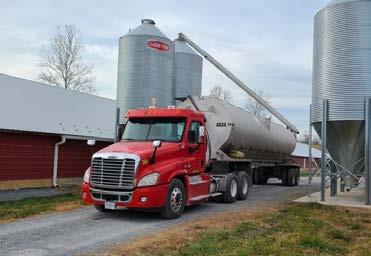
intern with UF’s aquatic animal medicine program, was first author on the study and developed a case report on the dolphin as part of her research project. She traveled to Memphis and worked closely with Dr. Richard Webby, who directs the World Health Organization Collaborating Center for Studies on the Ecology of Influenza in Animals and Birds at St. Jude’s and served as corresponding author on the paper
Webby’s lab investigates avian influenza cases in many species and was key in determining where the virus may have originated, what unique RNA characteristics or mutations were present that could suggest its ability to infect other mammals, and how the virus could be tracked from this source.
The researchers sequenced
genomes from local birds and looked at viruses isolated from Northeast seal populations.
“We still don’t know where the dolphin got the virus and more research needs to be done,” Webby said.
“This investigation was an important step in understanding this virus and is a great example where happenstance joins with curiosity, having to answer the ‘why’ and then seeing how the multiple groups and expertise took this to a fantastic representation of collaborative excellence,” said Dr. Mike Walsh, an associate professor of aquatic animal health, who served as Murawski’s faculty mentor.
Sarah Carey is director of communications at the University of Florida College of Veterinary Medicine.
Specializes in agricultural transportation and is headquartered in the Shenandoah Valley of Virginia, we are small enough to care, but large enough to serve our customers and beyond. Rocktown works almost exclusively in the live production side of the poultry industry with smaller cooperatives up to different sized integrators.
Although headquartered in Virginia, we have nation-wide reach. Over the years, we have successfully transitioned or ramped up 10 satellite operations across 8 different states. In 2019, we were selected as the dedicated live carrier to a new large-scale integrator in Nebraska to ramp up from zero to full production in approximately nine months. This sector of the Rocktown portfolio operates under Western Ag Transport as a Nebraska based company employing about 70 people and expanding all the time.
We are a multi-generational family run company that is in this for the long haul and constantly looking to expand with new and current partners, particularly in the poultry industry. While we specialize in the live transportation side of the business, we are currently seeking to expand into other realms such as live management, catching, and cold storage transportation. As a customer, you’ll find that not only are our rates competitive, but our service will far exceed standard expectations.
POULTRY TIMES POULTRYTIMES.COM 26 Derrick Peery Transportation Manager Cell: 540-908-1098 Email: dpeery@rocktown-transport.com Phil Peery Owner Cell: 540-820-1000 Email: phil@rocktown-transport.com 4724 Early Road Mt. Crawford, VA 22841 360 W 52nd St Fremont, NE 68025 Rocktown Transport is a family owned contract carrier company located in the Shenandoah Valley. Specializing in the transportation of agricultural commodities such as live birds, bulk feed, ingredients, etc. We partner with individual family farms all the way up to large corporate poultry companies and cooperatives. Rocktown is proud to be a small enough company to truly care about its employees, but large enough to serve its customers in a meaningful fashion. |

The detection of highly pathogenic avian influenza virus in a bottlenose dolphin recovered by University of Florida marine animal rescuers in 2022 was the first time the virus had been identified in a cetacean in America.
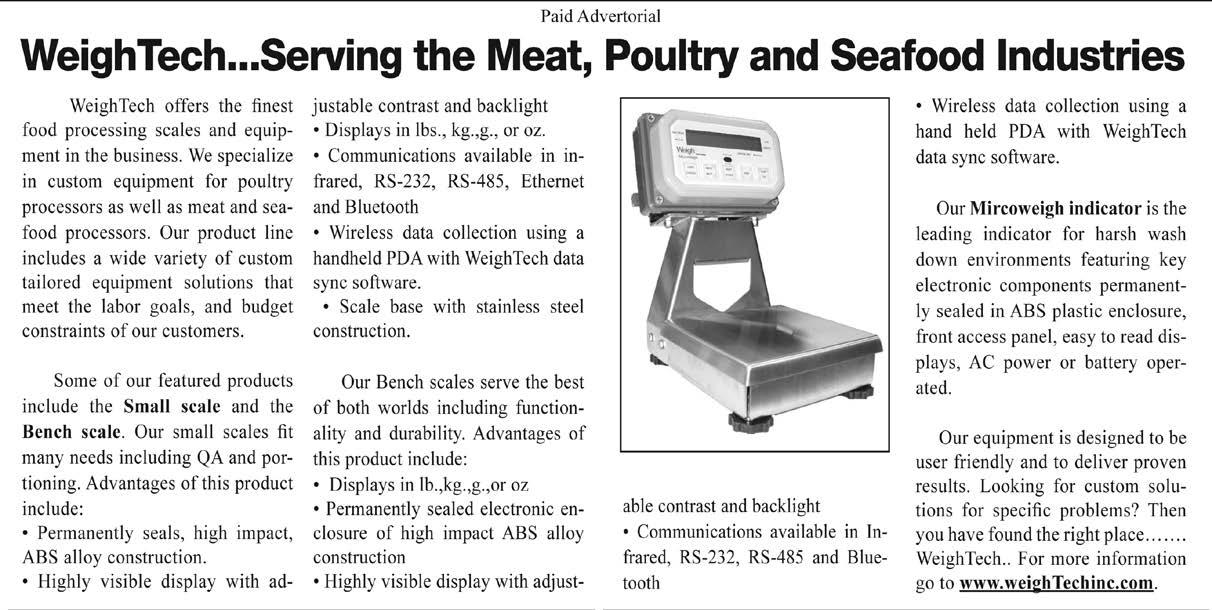
POULTRY TIMES POULTRYTIMES.COM 27 Paid Advertorial WeighTech...
the Meat, Poultry and Seafood Industries-
Serving
Photo courtesy of the Florida Fish and Wildlife Conservation Commission
Simpson named AEB chair for 2nd year
BY ELIZABETH BOBENHAUSEN Poultry Times staff ebobenhausen@
poultrytimes.com
MONROE, N.C. — Alex Simpson was named the chair of the American Egg Board for the second year. Simpson, who oversees the day-to-day operations of Simpson’s Eggs in Monroe, N.C., is also the president of the North Carolina Egg Association. The organization was proud to announce that he had been chosen to be the AEB chair again. The American Egg Board consists of 18 producer members and their alternates.
AEB announced the vote for Simpson during its recent annual meeting in San Antonio, Texas.
“The American Egg Board is tasked with advancing the interests of egg farmers across the United States,” the North Carolina Egg Association noted in a release. “Annually, the Secretary of Agriculture appoints half of
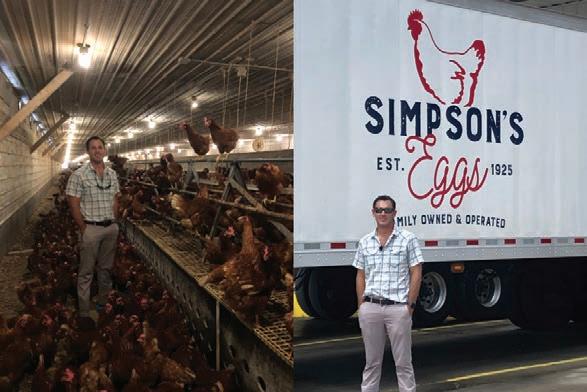
N.C. Egg Association
Alex Simpson, Simpson’s Eggs, has been selected to chair the American Egg Board for a second consecutive year.
the board members for two-year terms from nominees provided by eligible producer organizations. Following this process, the board nominates and appoints its Executive Committee, a responsibility that was fulfilled
That’s because grandmothers, delis, fast food stores, and restaurants everywhere choose fresh, plump, juicy Mar-Jac chicken. From our fully integrated operation in Gainesville, we produce, process and deliver over 2 million chickens weekly... coast to coast and overseas. Our 350 contract growers and 1200 employees are committed to producing the highest quality poultry in the world. We offer WOG’S, cut-up and further processed poultry products and ship ice pack, vacuum pack or frozen.

producer through and through. He is a fourth-generation farmer. His family are well-known egg producers.
“Ever since I was a little boy, I have worked towards being a farmer and running my family’s egg farm,” he said in a NCEA bio. “As a kid I dreamed of doing what my dad for a living, working with hens and providing for our customers.”
“Serving on the board and collaborating with the Executive Committee is an honor and privilege,” Simpson said. “I am surrounded by passionate individuals and industry leaders who are committed to sustainable farming and feeding America.”
during the recent meeting.”
With this continued appointment, Simpson will work with egg farmers to assist the AEB effort of enhancing the egg and egg product market both nationally and internationally. He is an egg
Simpson is joined on the AEB Executive Committee with John Watson, vice president of accounting and marketing stewardship with Braswell Family Farms in Nashville, N.C., who will serve as treasurer. Both Watson and Simpson represent AEB’s Area 1, which includes eastern U.S. states.

Companies Is looking for an experienced freight broker agent. Be your own boss, work from home, 40 % commission on all loads and make unlimited money with no cap on your pay. This position requires a book of business, contacts, and one years’ experience minimum. Please send resume with references to nathan@wholesomecompanies.net
CHANCES ARE SOME OF THE BEST CHICKEN YOU’VE EATEN WAS OURS!
Mar-Jac Poultry, Inc. Aviation Blvd. • P.O. Box 1017 Gainesville, GA 30503 770-536-0561 1-800-226-0561 Wholesome
Family owned since 1964 Learn more at www.wholesomecompanies.net POULTRY TIMES POULTRYTIMES.COM 28
PT

Midwest slammed by deadly tornadoes
BY ELIZABETH BOBENHAUSEN Poultry Times staff
ebobenhausen@ poultrytimes.com
GAINESVILLE, Ga. — The Midwest of the United States was rocked by many tornadoes hitting Texas, Nebraska, Oklahoma, Kansas, Missouri, and Iowa, a recent USA Today notes. The storms killed four people in Oklahoma, demolished houses and seized power to thousands of people. Thirty to 100 injuries and one death occurred in the town of Sulphur, 80 miles of Oklahoma City. Another death included a four-month-old baby in the county of Hughes, Okla. The other death was in Love County, Okla.
Oklahoma Gov. Kevin Stitt declared a state of emergency. He surveyed some local damage including a sports bar, where several people sustained injuries from the storm.
“Definitely the most damage since I’ve been governor,” he said. Texas and Oklahoma experienced 45,000 homes and businesses without power. USA Today
added, “the National Weather Service in Des Moines said preliminary reports indicate at least 10 tornadoes struck central Iowa during Friday’s storm front, based on initial damage information.”
In Douglas County, Neb., Sheriff Aaron Hanson said, “A tornado of this size hits major urban area causes major damage with no confirmed deaths or serious injuries, thousands of people turn out to help. Is this God reminding us that we need to be kinder to one another?”
El Niño
A potential lack of an El Niño weather pattern this year could impact what unfolds weatherwise.
CNN explained in an article, “El Niño is a natural climate pattern marked by warmer than average ocean temperatures in the equatorial Pacific. When the water gets cooler than average, it’s a La Niña. Either phase can have an effect on weather around the globe.”
“By June, forecasters expect those ocean temperatures to hover close to normal, marking
a so-called neutral phase, before La Niña builds in early summer,” the National Oceanic and Atmospheric Administration’s Climate Prediction Center said.
The effect of an El Niño or La Niña on U.S. weather patterns changes due to the type of season and is dependent on the strength of the El Nino or La Nina.
“The influence of El Niño or La Niña on U.S. weather isn’t as clear-cut in the summer as it is in the winter, especially during a transition between the two phases,” Michelle L’Heureux, a climate scientist with the Climate Prediction Center, said. “Temperature differences between the tropics and North America are more extreme in the winter. This allows the jet stream to become quite strong and influential, reliably sending storms into certain parts of the U.S.”

In information from The Ohio State University, it notes that there are two conditions that must happen for a tornado to form. These are:
1. Warm moist surface conditions and cold air above.
2. Winds that change in both speed and direction as you move up in the atmosphere, known as vertical wind shear.
One of the reasons forecasters contribute to the many tornadoes the Midwest recently saw is because the climate was coming out of an El Niño. The El Niño is dissipating, and forecasters predict it will be gone by the summer of 2024.

POULTRY TIMES POULTRYTIMES.COM 29 WHOLESALE PRICES: On cartons, labels, flats, trays, nests, marketing items, poultry supplies & more! 866.333.1132 www.eggcartonstore.com ® FLY PROBLEMS? Got Manure? We have the cure! Entomologist on Staff. Free Phone Consultation. www.kunafin.com 1-800-832-1113
PT
Kroger and Albertsons work to reach deal with trade commission
BY ELIZABETH BOBENHAUSEN Poultry Times staff
ebobenhausen@ poultrytimes.com
GAINESVILLE, Ga. — Grocery store chains, Kroger and Albertsons, plan to sell off more of their stores to meet the demands of the United States Federal Trade Commission. According to the Associated Press, the agency had grievances in regard to the merging of these two companies.
Both chains will sell 579 stores in markets where they intersect to the New Hampshire-based company, C&S Wholesale Grocers. C&S has agreed to pay $2.9 billion for the 579 stores. The original divestiture plan said C&S would buy 413 stores for $1.9 billion.
“We have reached an agreement with C&S for an updated divestiture package that maintains Kroger’s commitments to customers, associates and communities, addresses concerns raised by regulators, and will further ensure that C&S can successfully operate the divested stores as they are operated today,” Rodney McMullen, Kroger CEO and chairman said in a statement. “Importantly, the updated divestiture plan continues to ensure no stores will close as a result of the merger and that all frontline associates will remain employed, all existing collective bargaining agreements will continue, and associates will continue to receive industryleading health care and pension benefits alongside bargained-for

wages. Our proposed merger with Albertsons will bring lower prices and more choices to more customers and secure the long-term future of unionized grocery jobs.”
It is uncertain whether the FTC will give the green light for the new merger. In February, FTC sued both corporate chains for the $26.5 billion merger because they were concerned about the competition between other grocery stores. With less competition,
the merger would have inflated grocery costs and lowered wage earnings for employees.
An Associated Press report noted that, “the FTC also said the initial plan to divest 413 stores to C&S was “inadequate” and would give C&S a hodgepodge of unconnected stores and brands, leaving it ill-equipped to compete with a combined Kroger and Albertsons.”
“We are confident this ex-
Subscribe to free newsletter: The Poultry Report
GAINESVILLE, Ga. — Poultry Times has launched a free email newsletter, The Poultry Report.
We have learned that relevant, actionable news and information are absolutely critical to every aspect of the poultry industry as we all navigate very challenging times. With a focus on current industry trends and

concise content delivery, The Poultry Report is designed to provide you a single source of industry insight in an easy-todigest format.
Delivered free to your email inbox Monday through Friday. To subscribe, visit https:// www.poultrytimes.com/thepoultryreport.
panded divestiture package will provide the stores, supporting assets and expert operators needed to ensure these stores continue to successfully serve their communities for many generations to come,” Eric Winn, C&S CEO, said in a statement.
The first merger plan was announced by the companies in 2022, in order to compete with large outlets such as Amazon and Walmart.
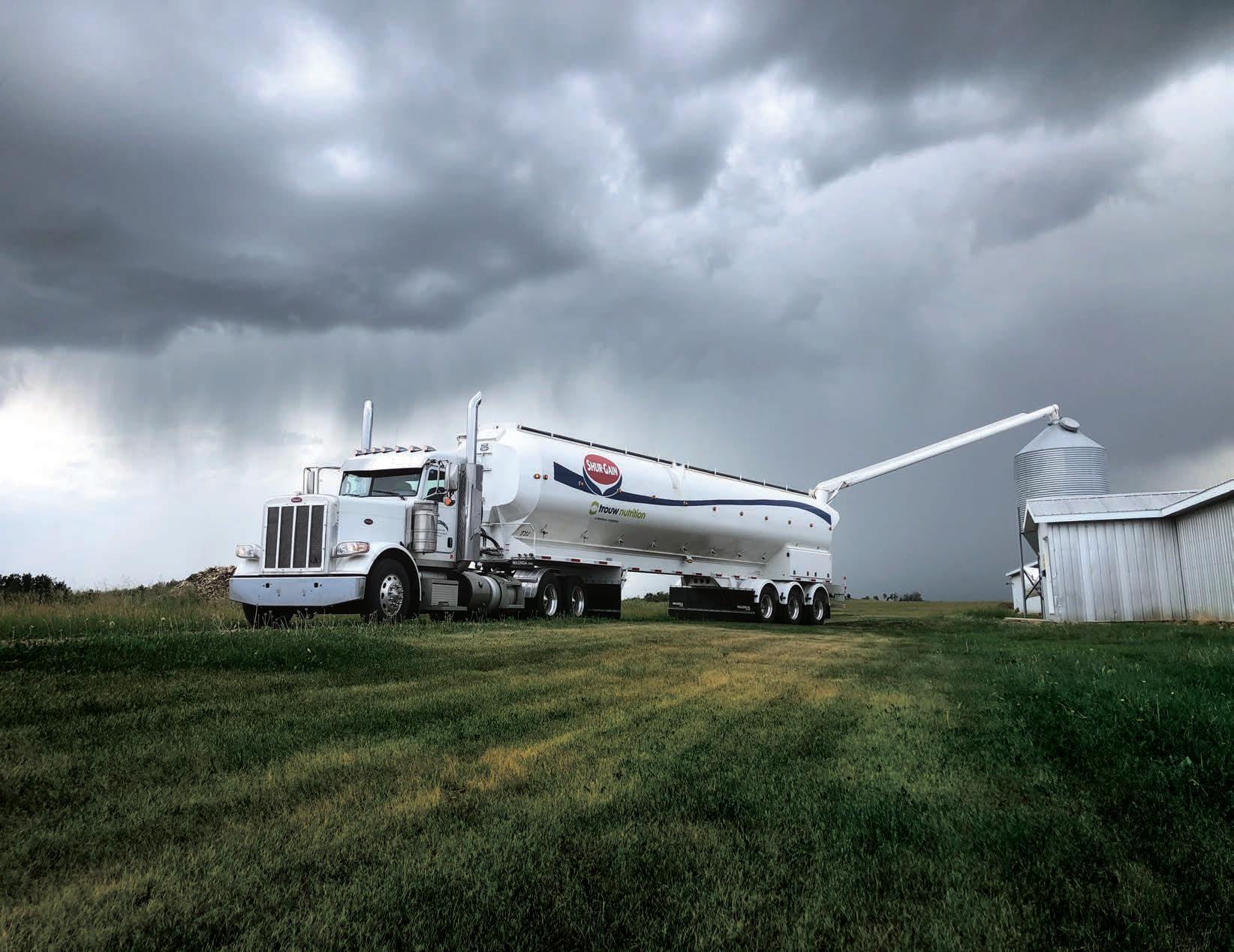

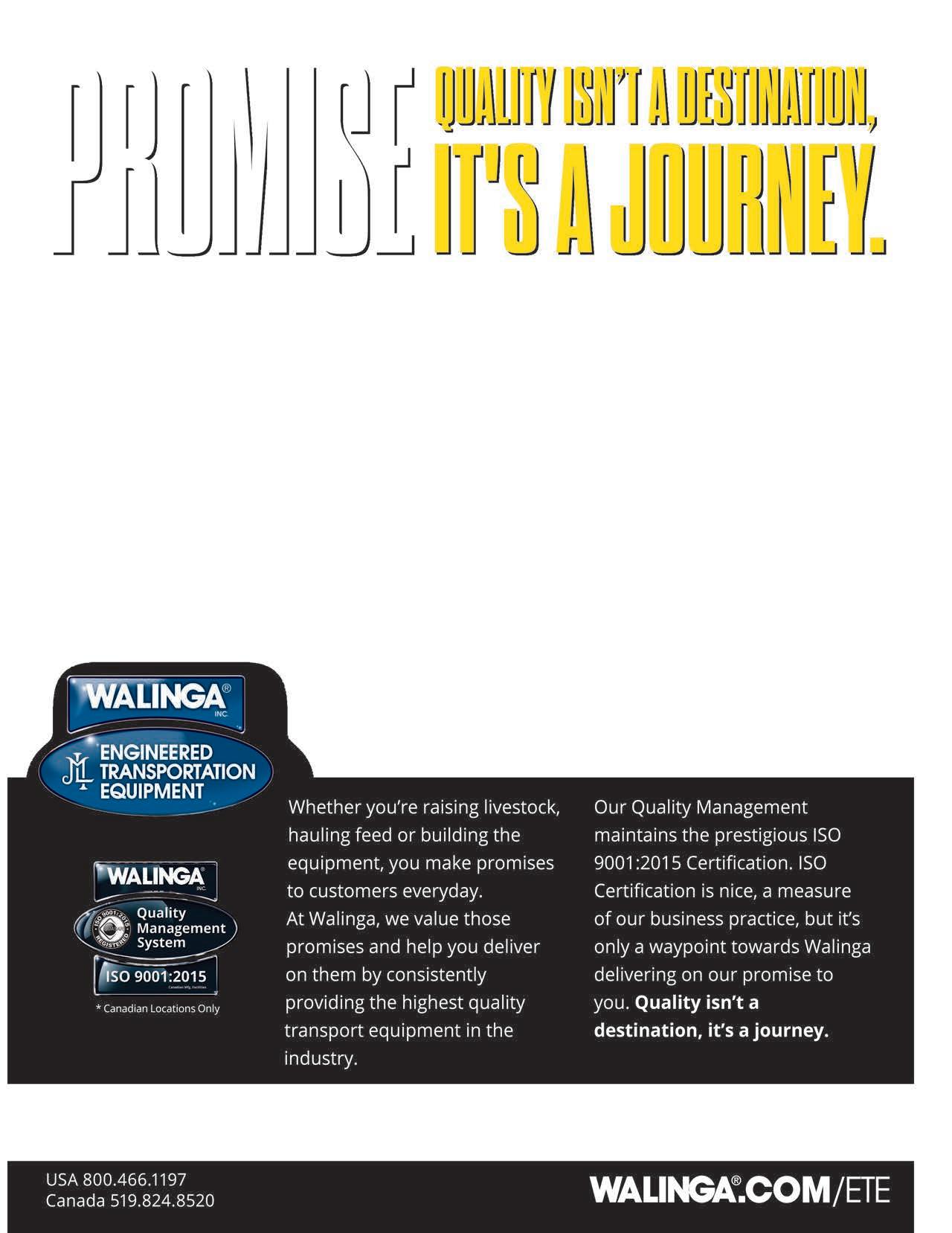

POULTRY TIMES POULTRYTIMES.COM 30
PT









































































































